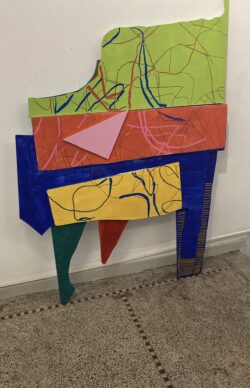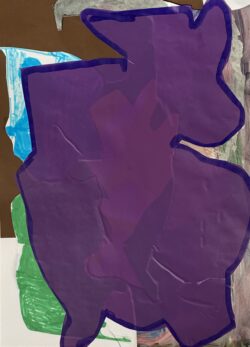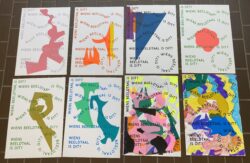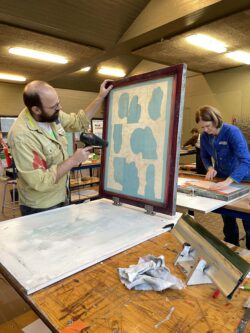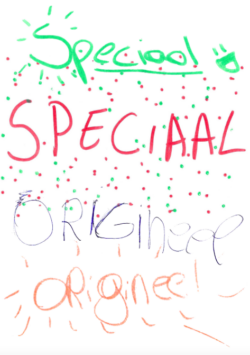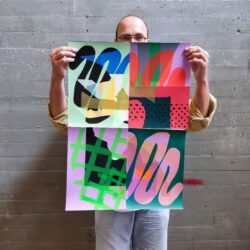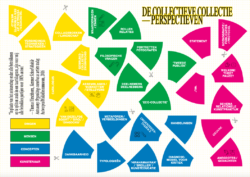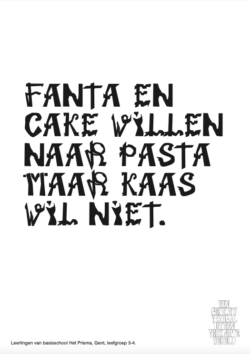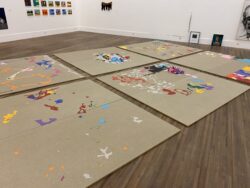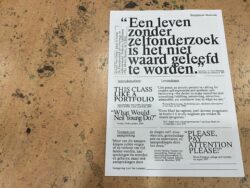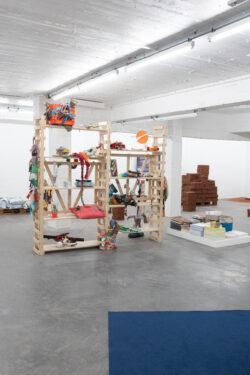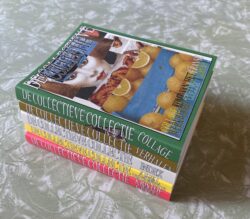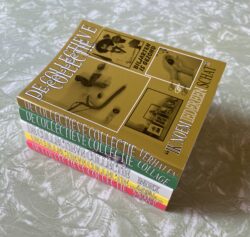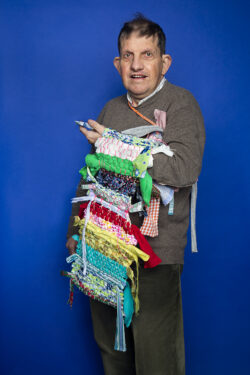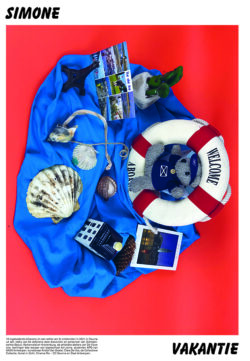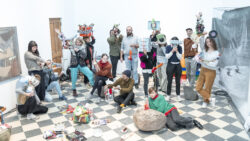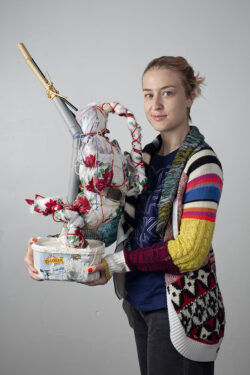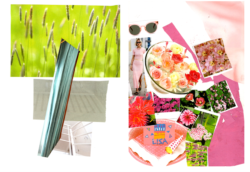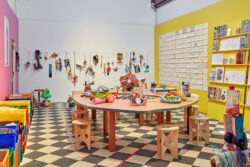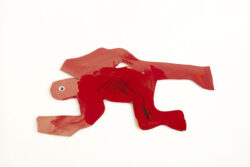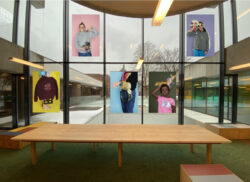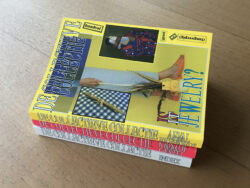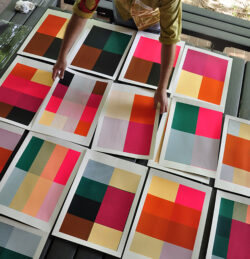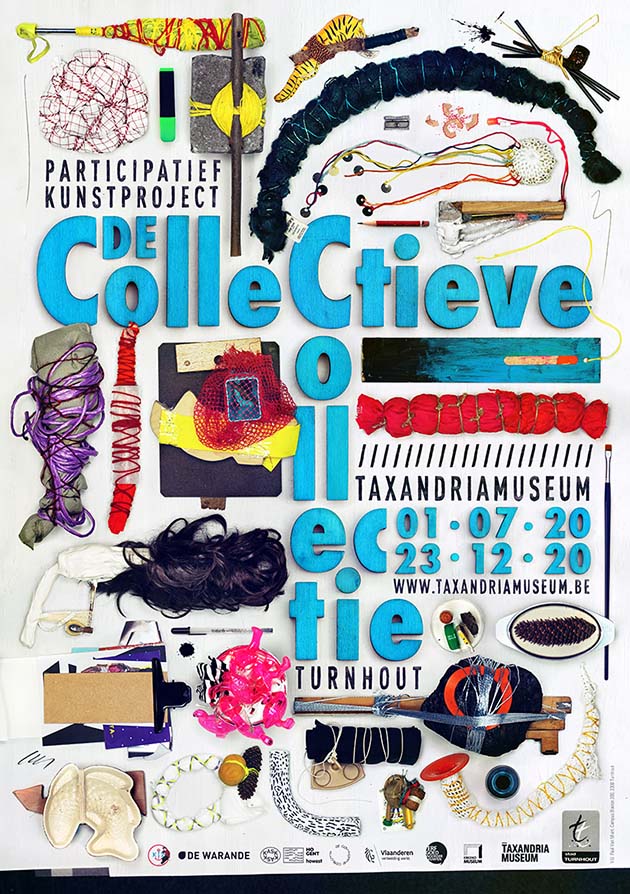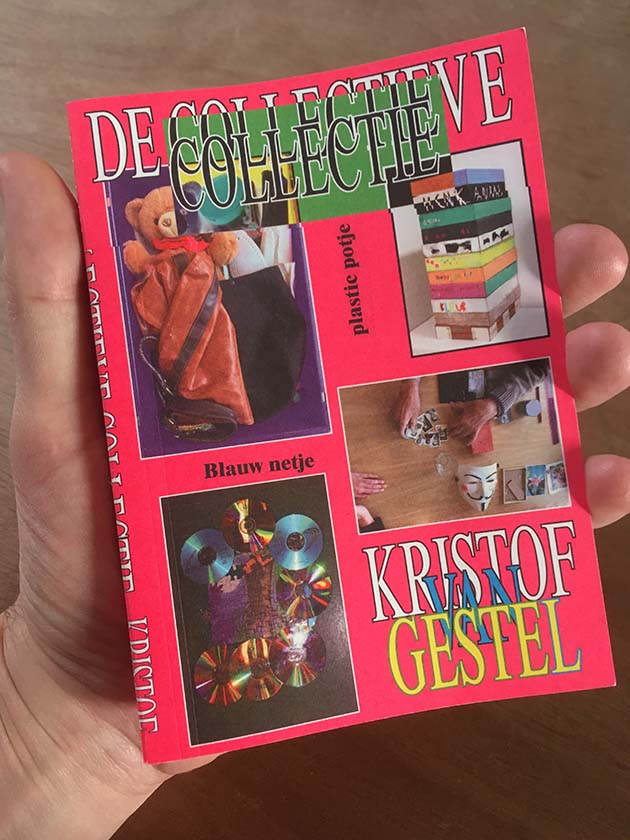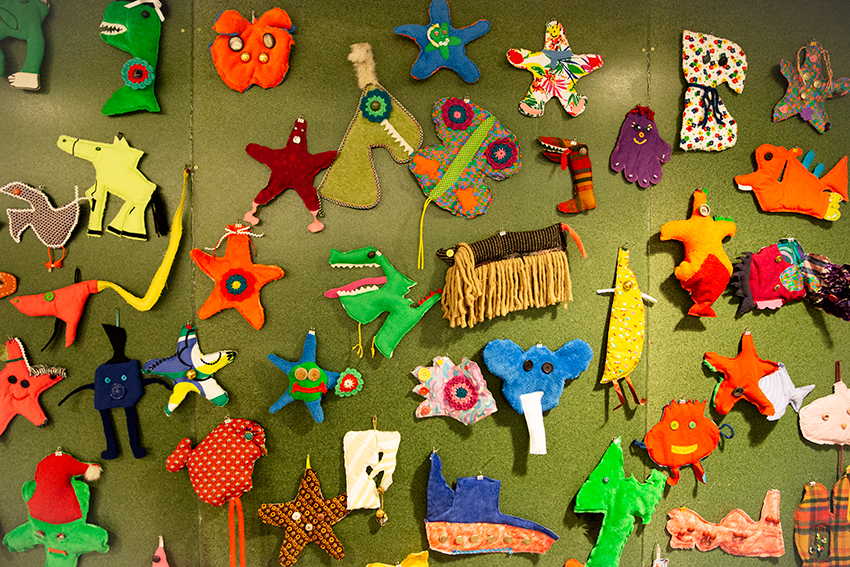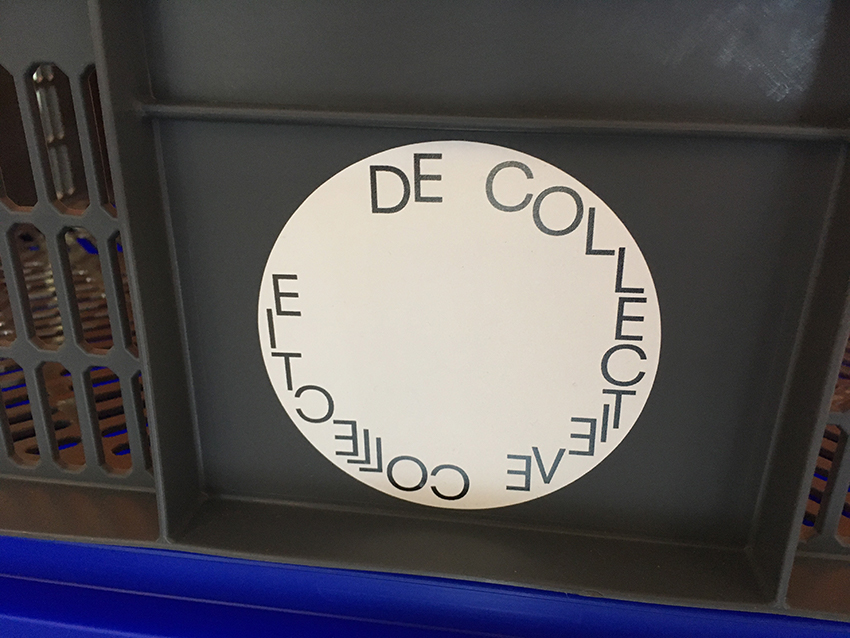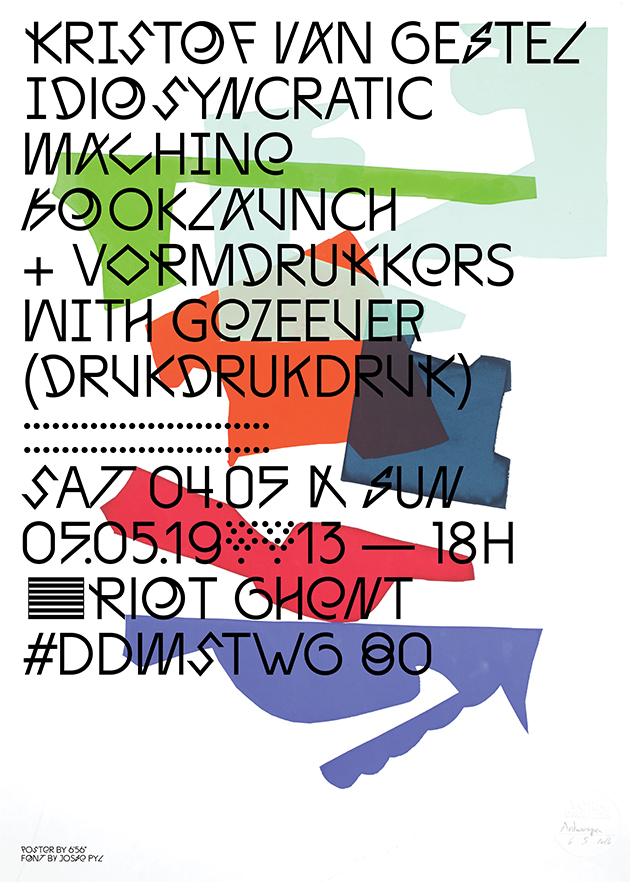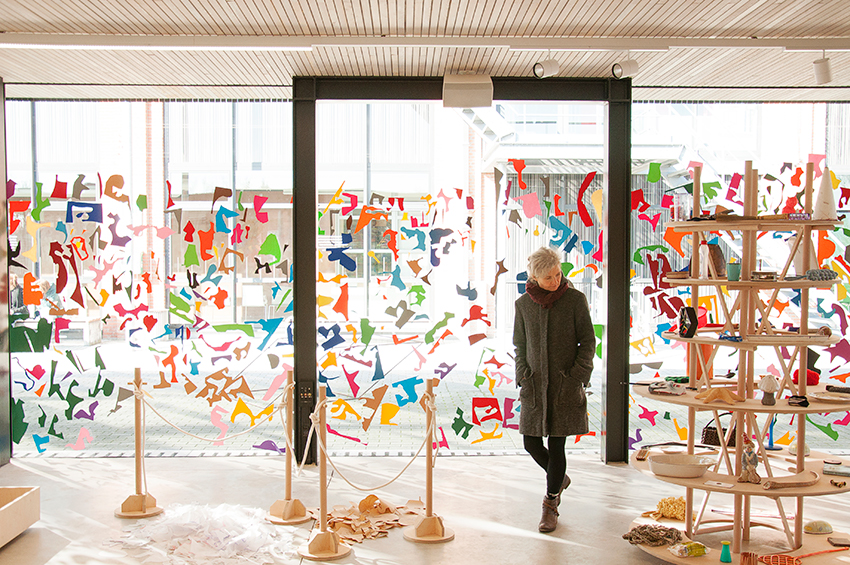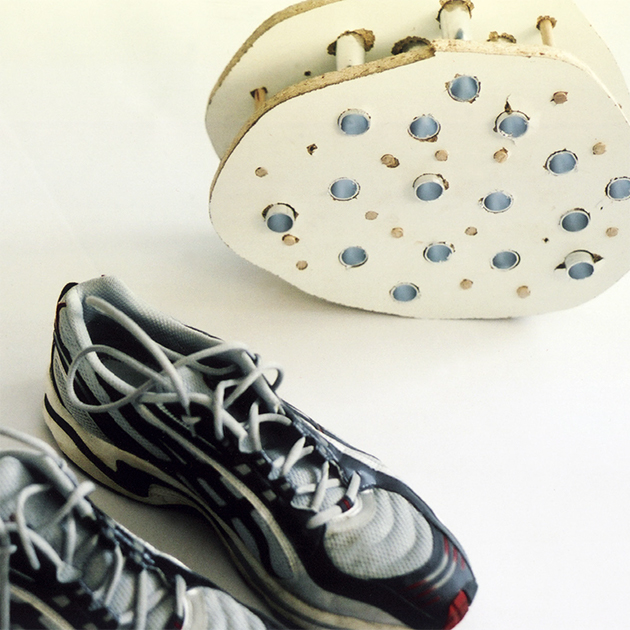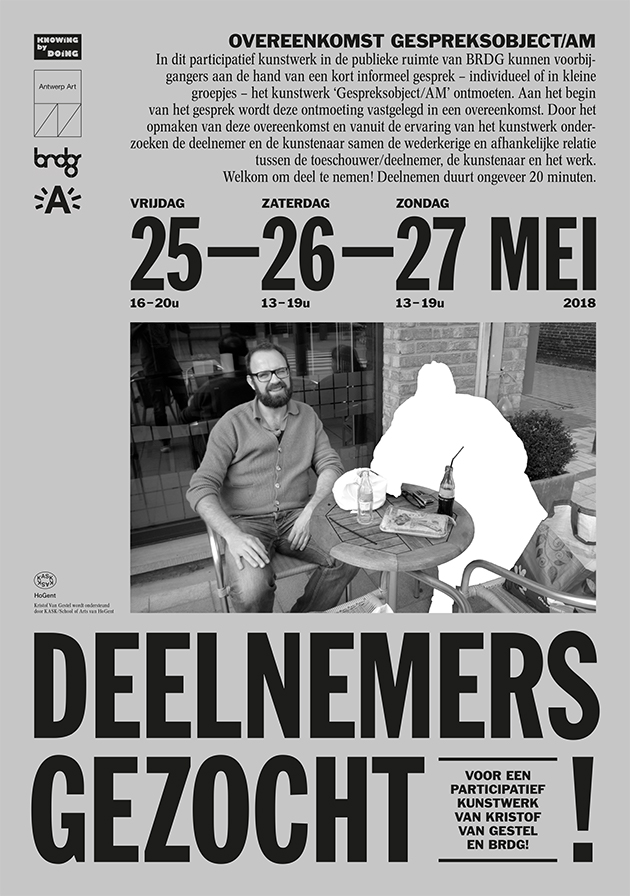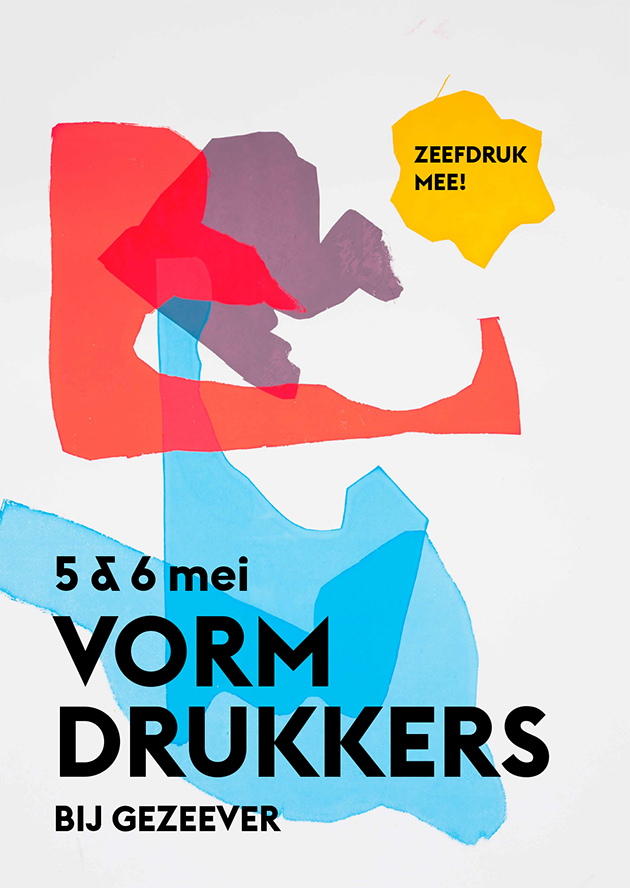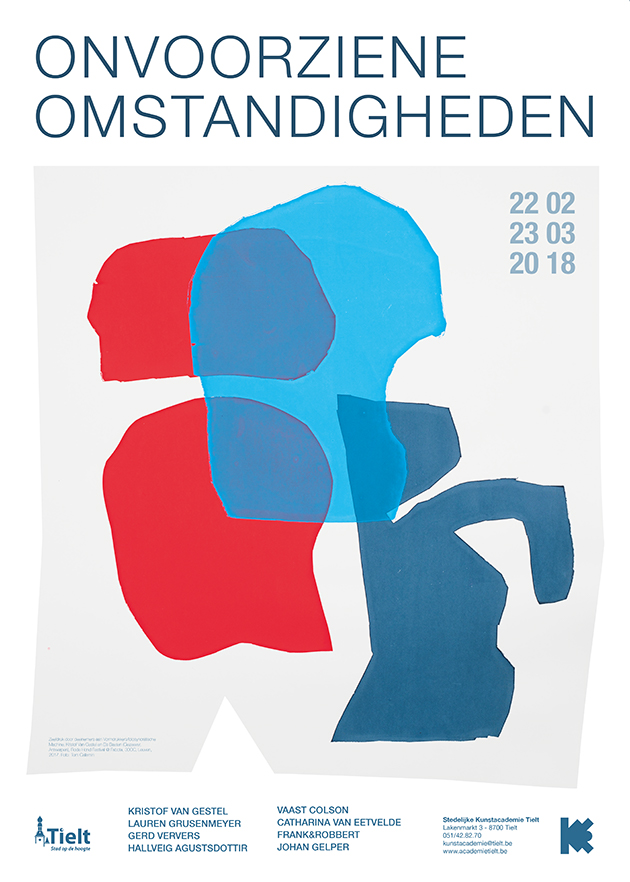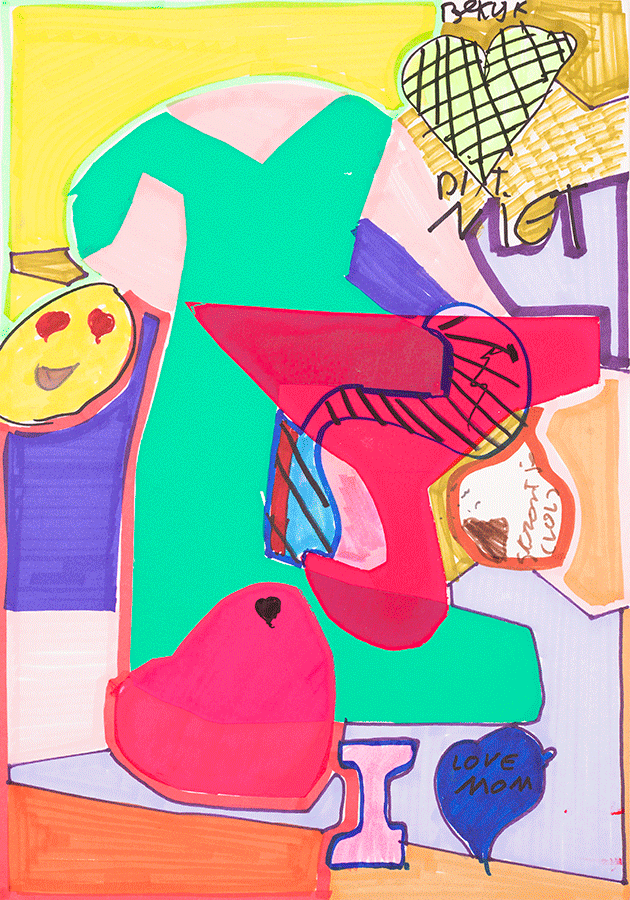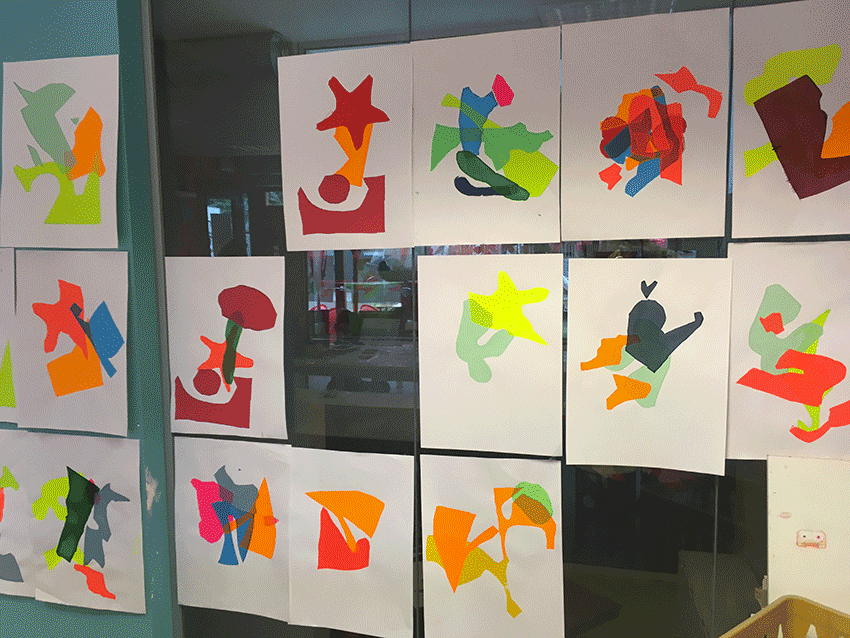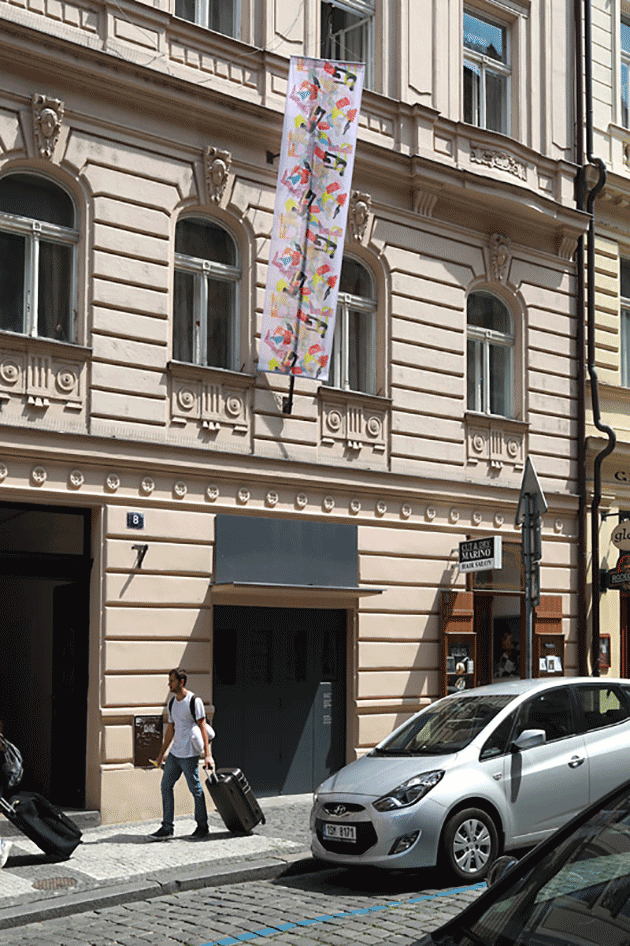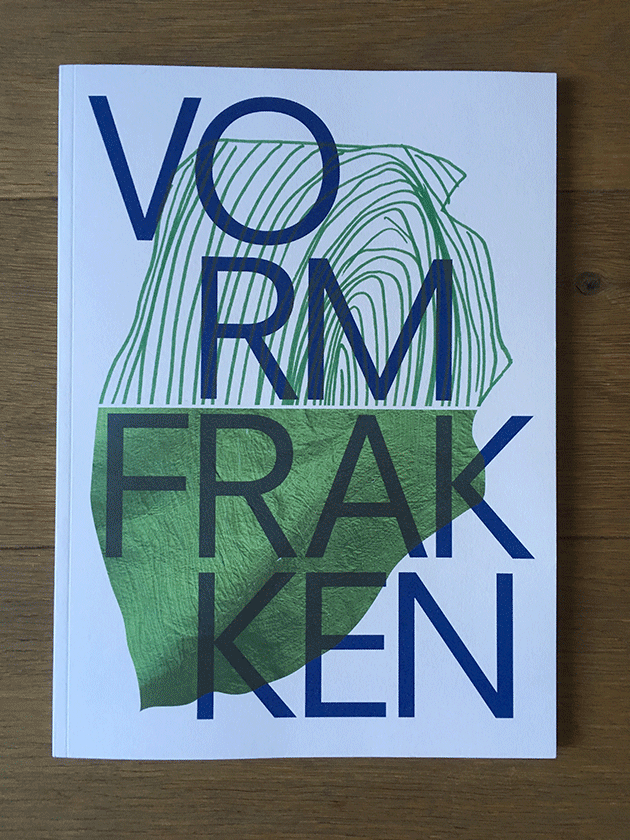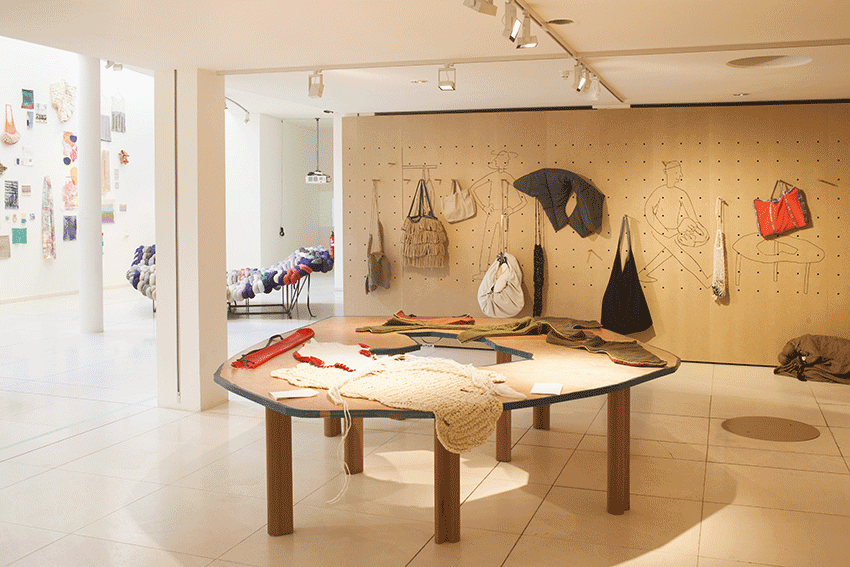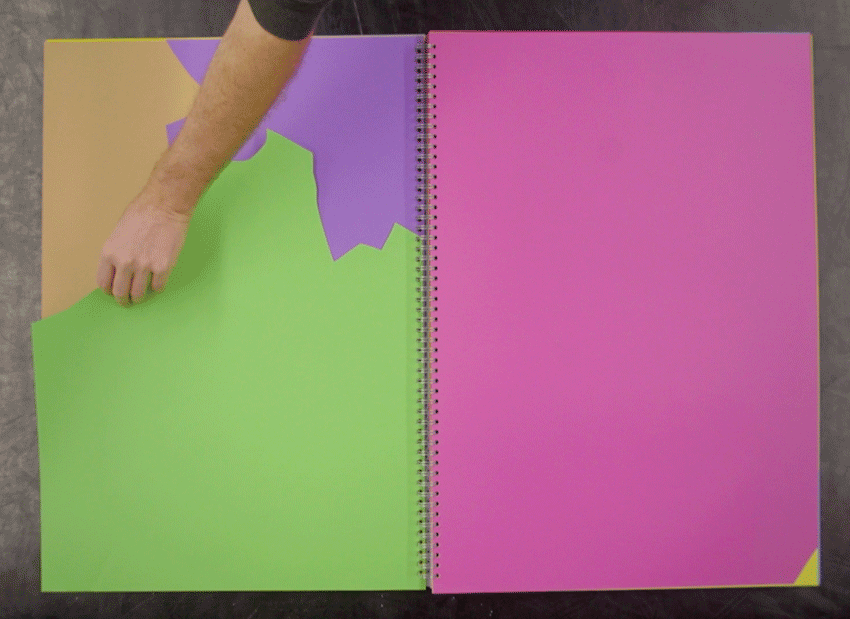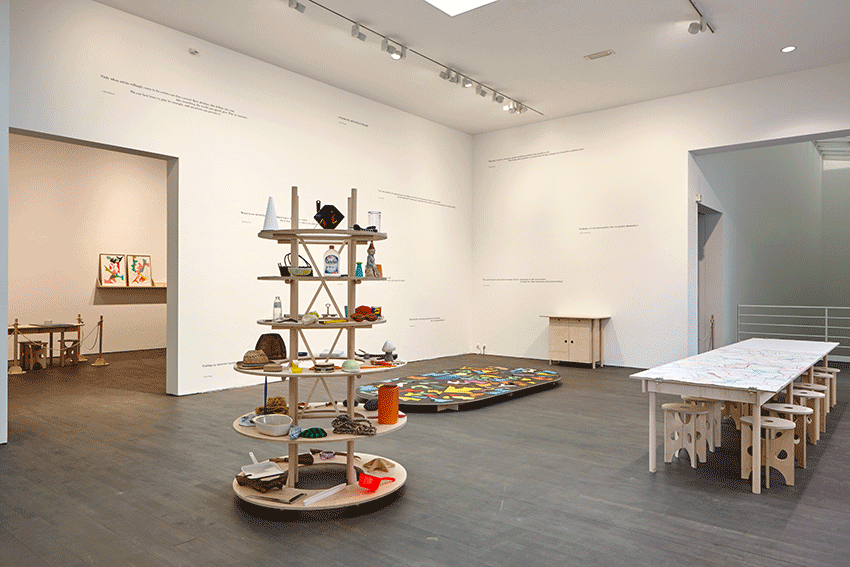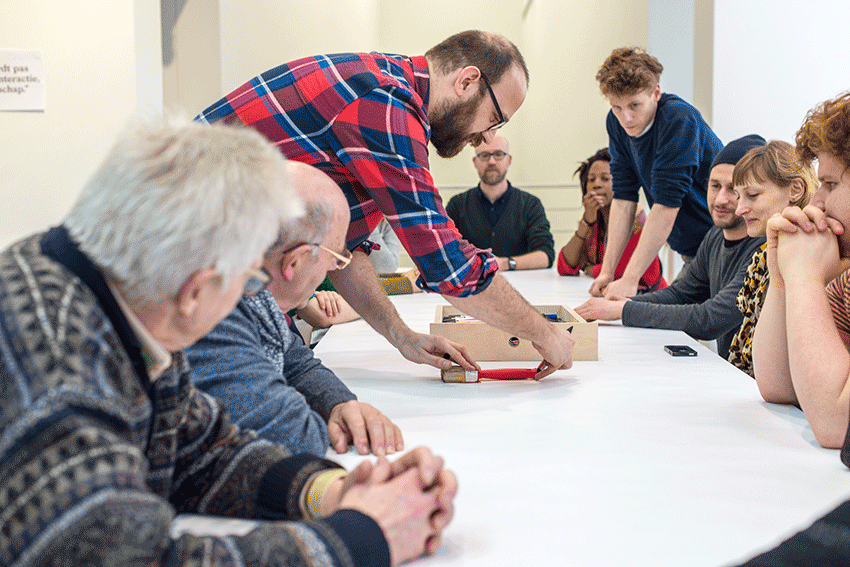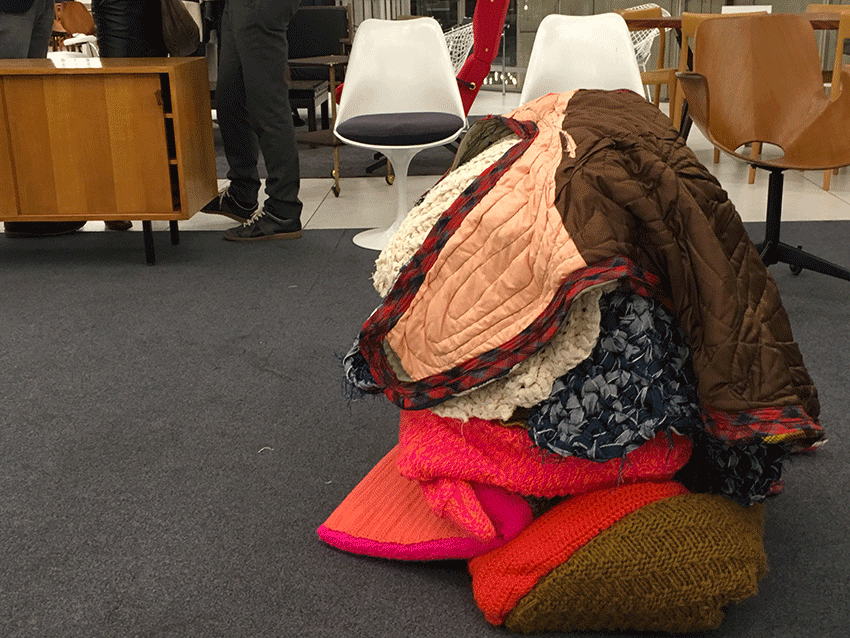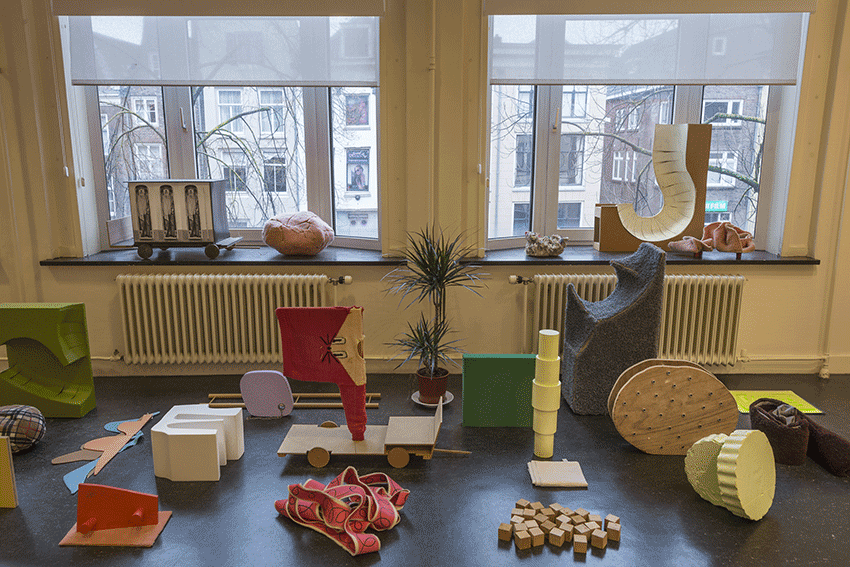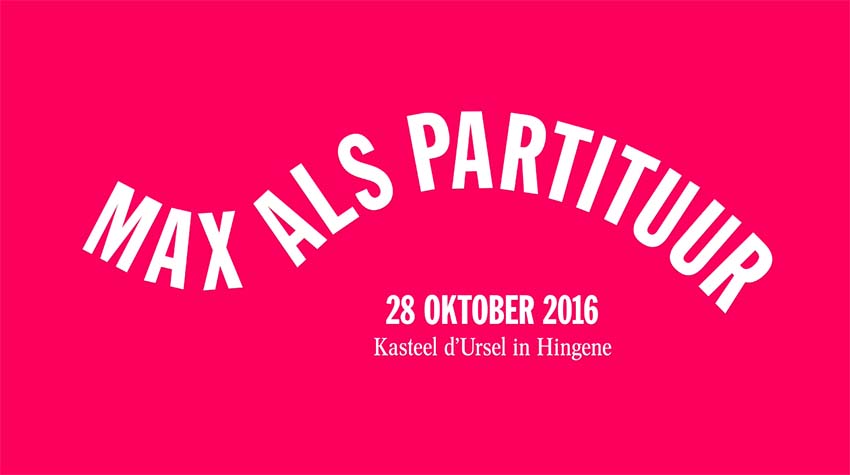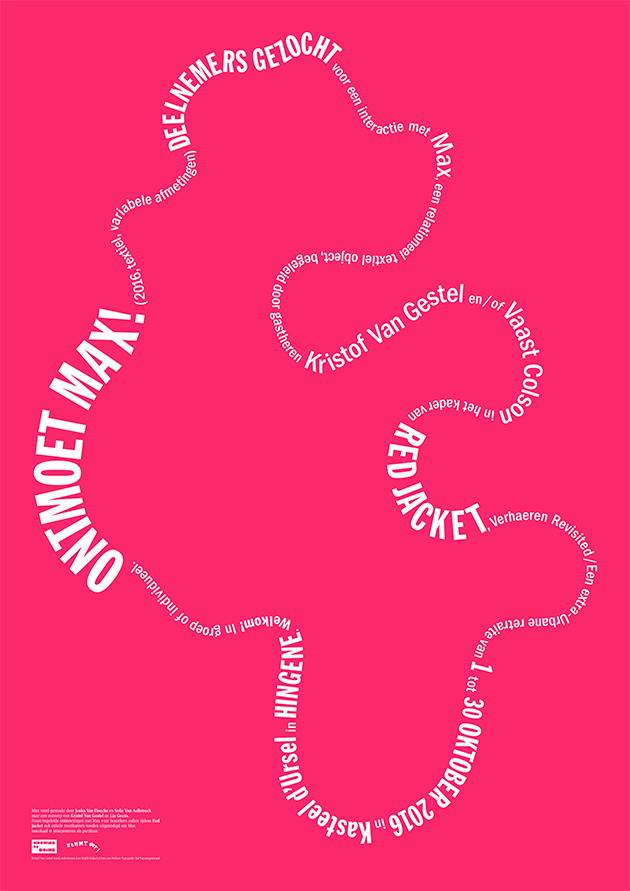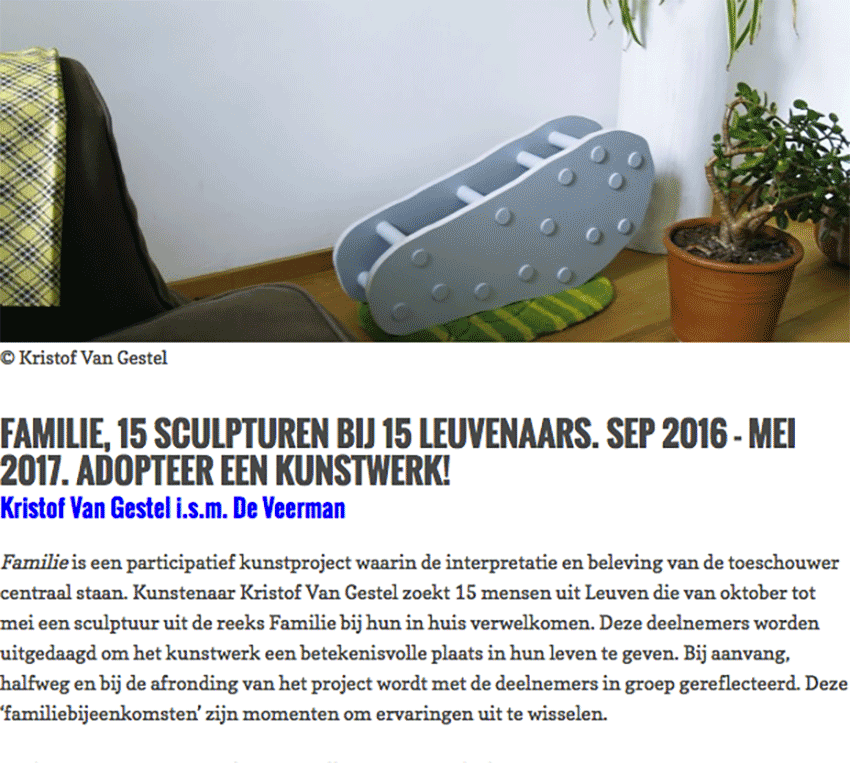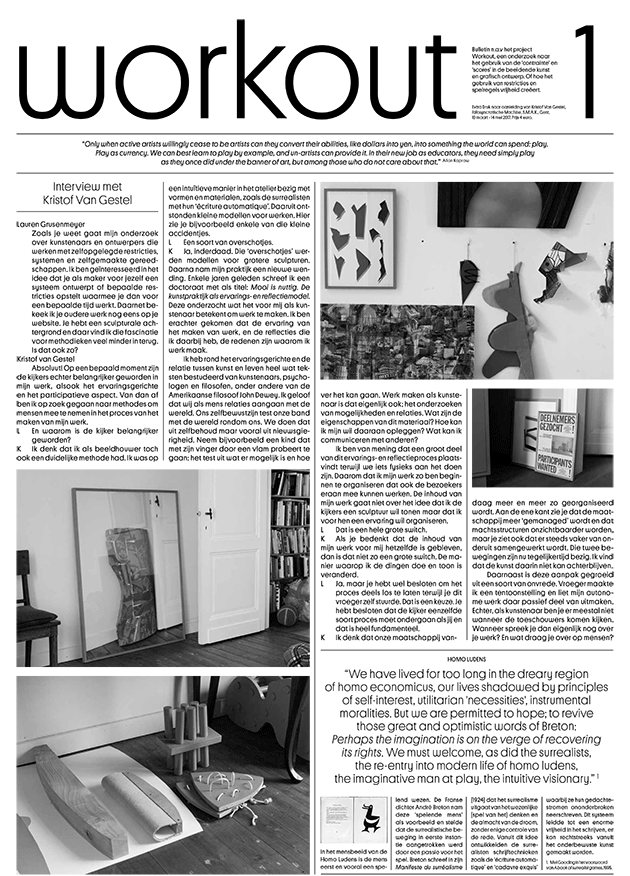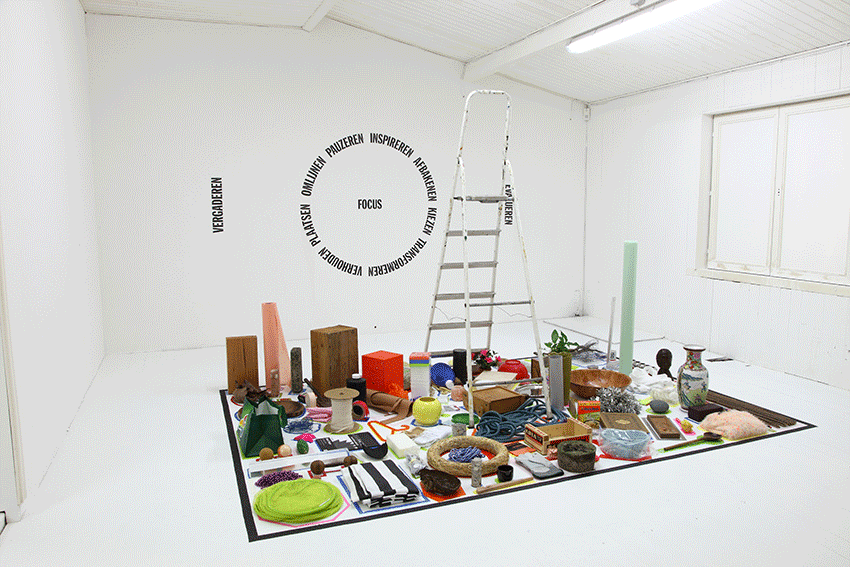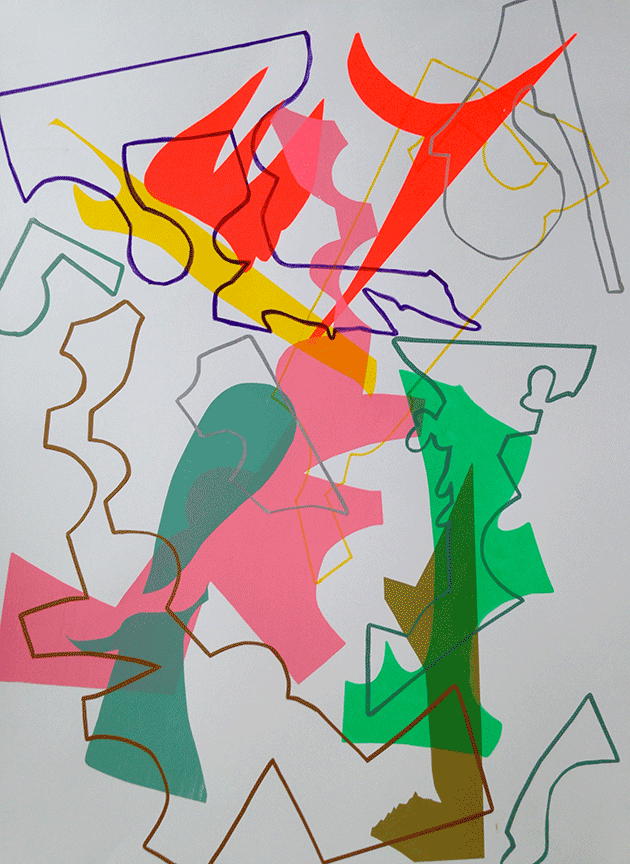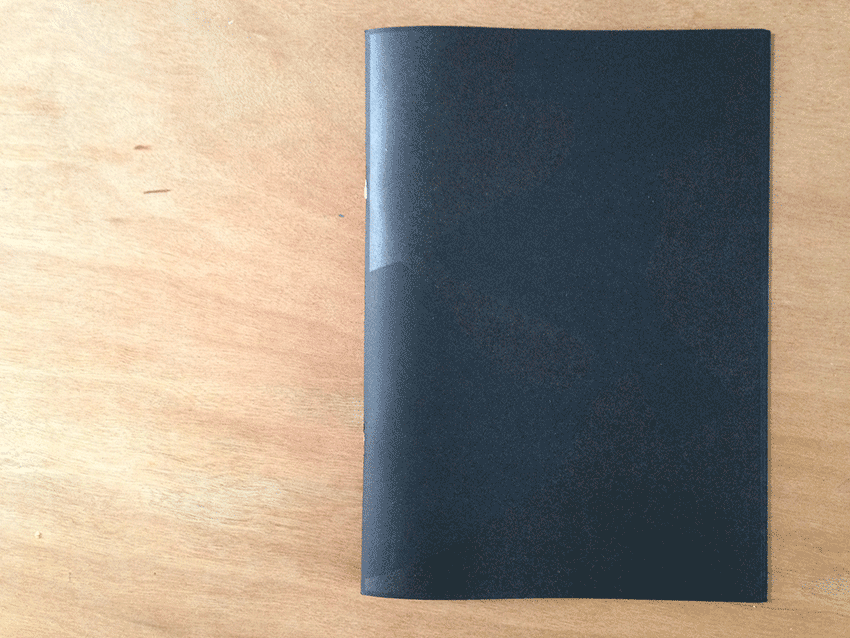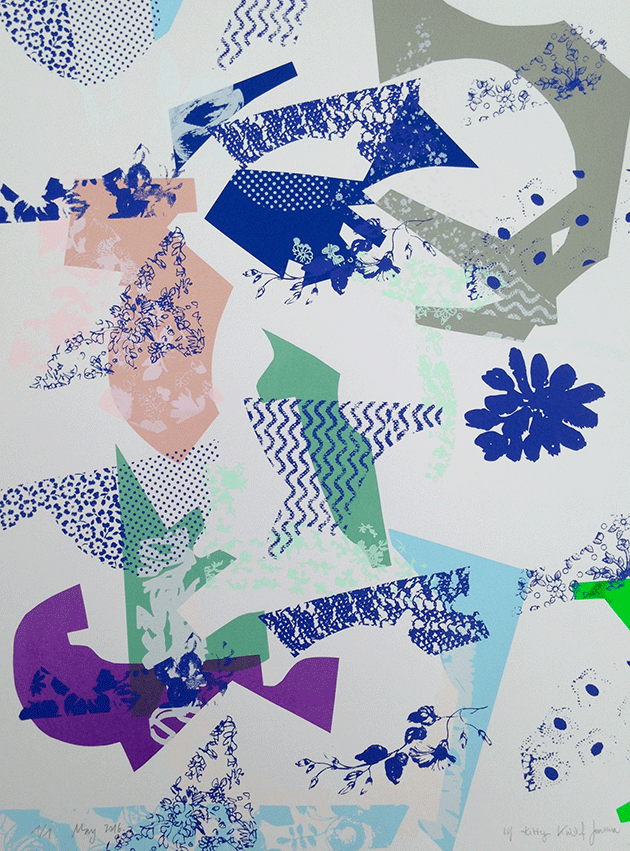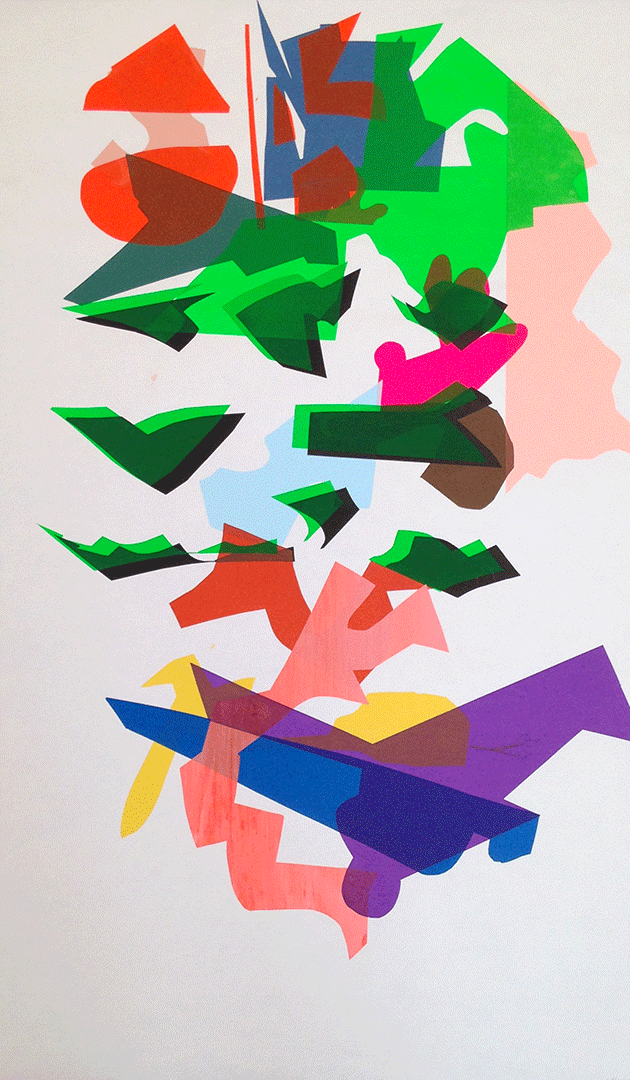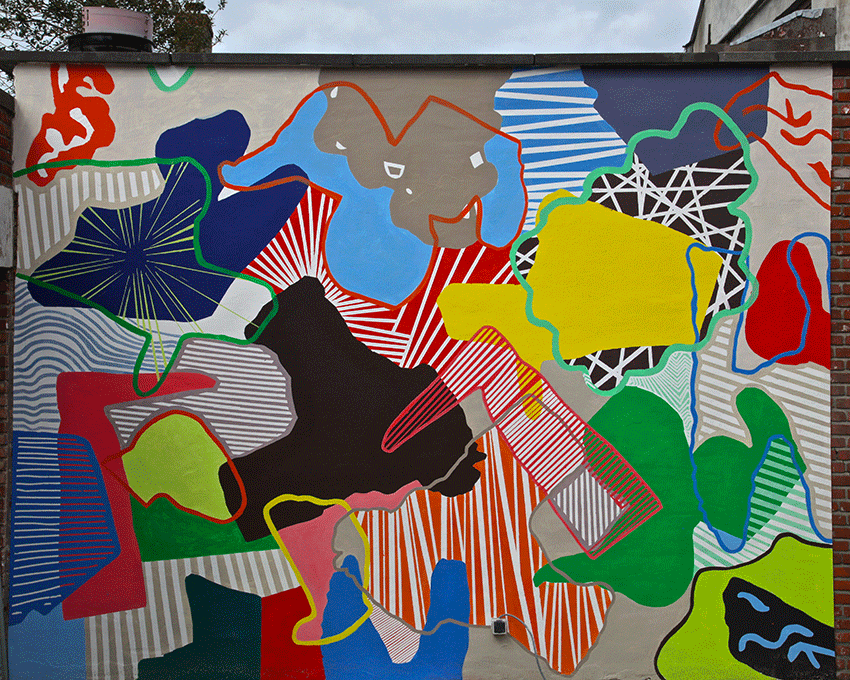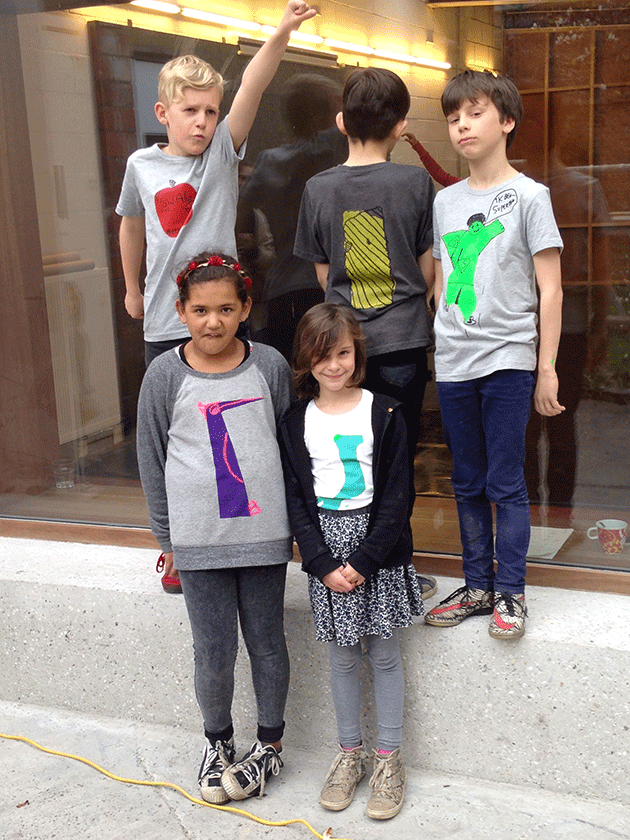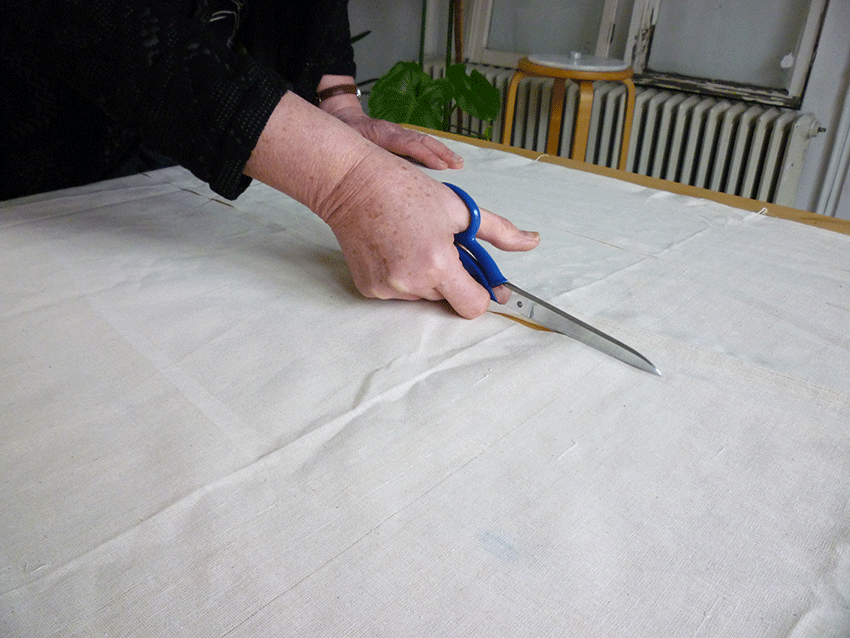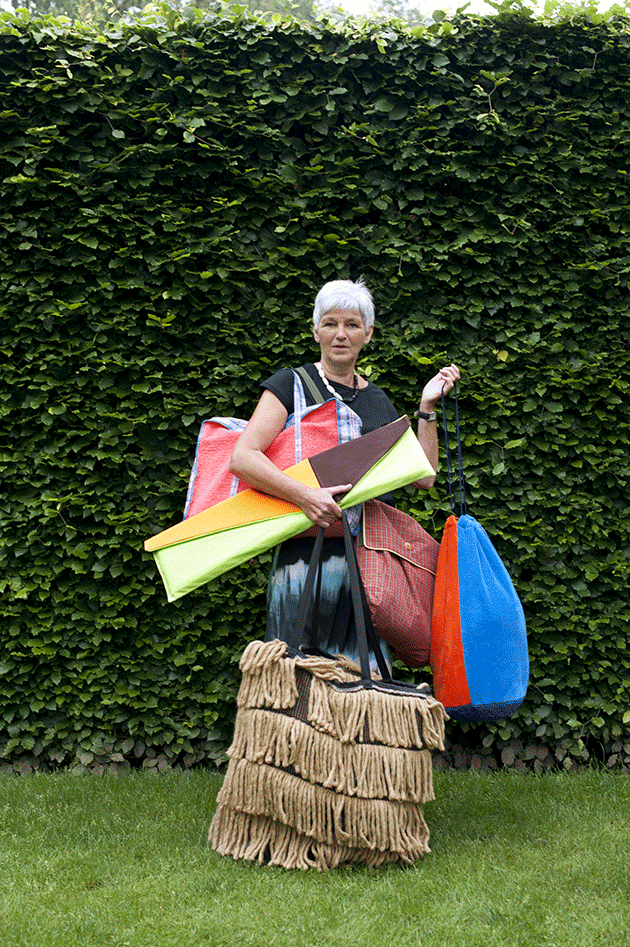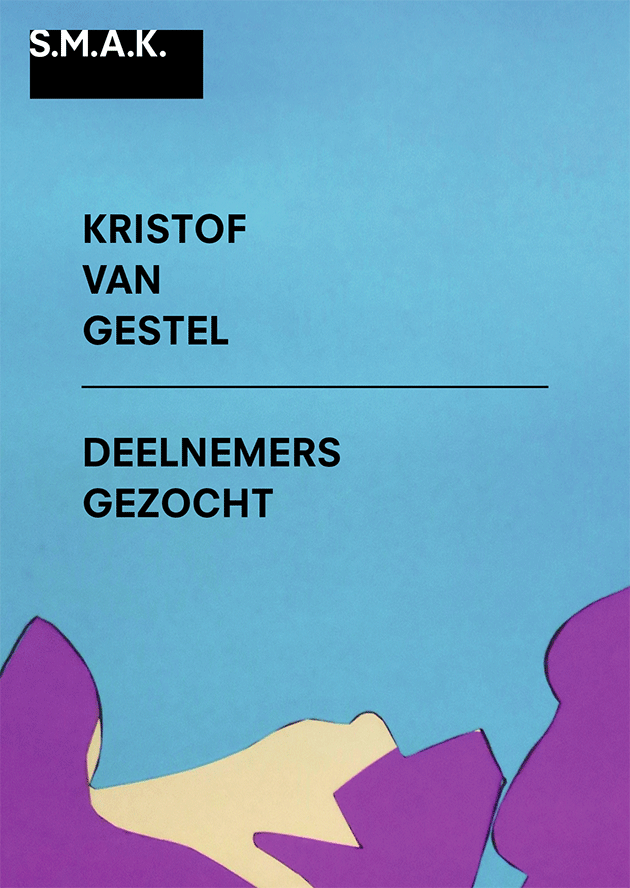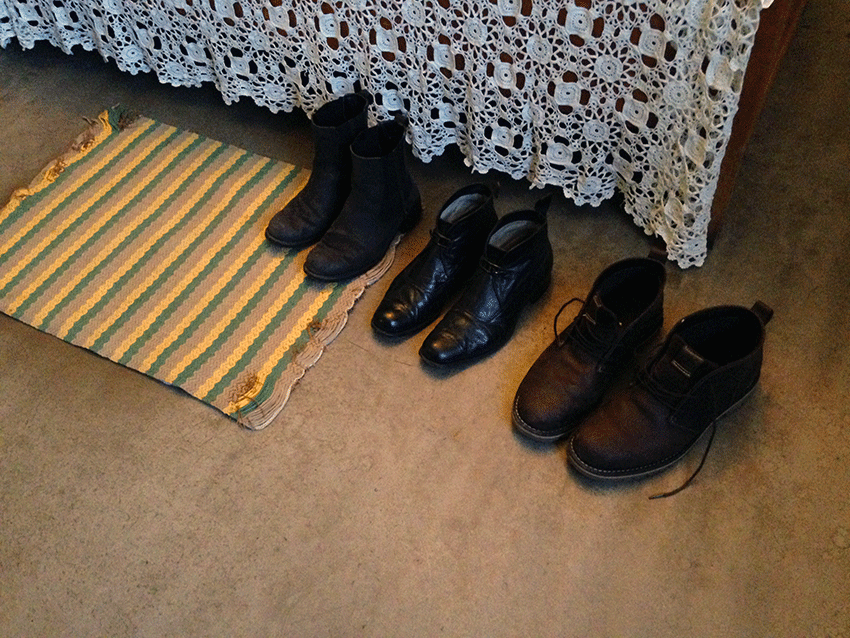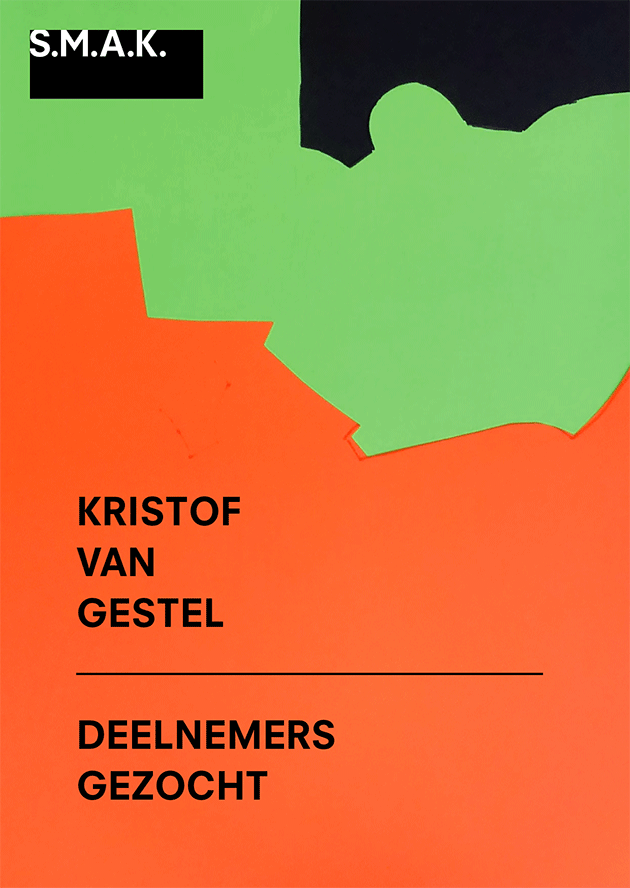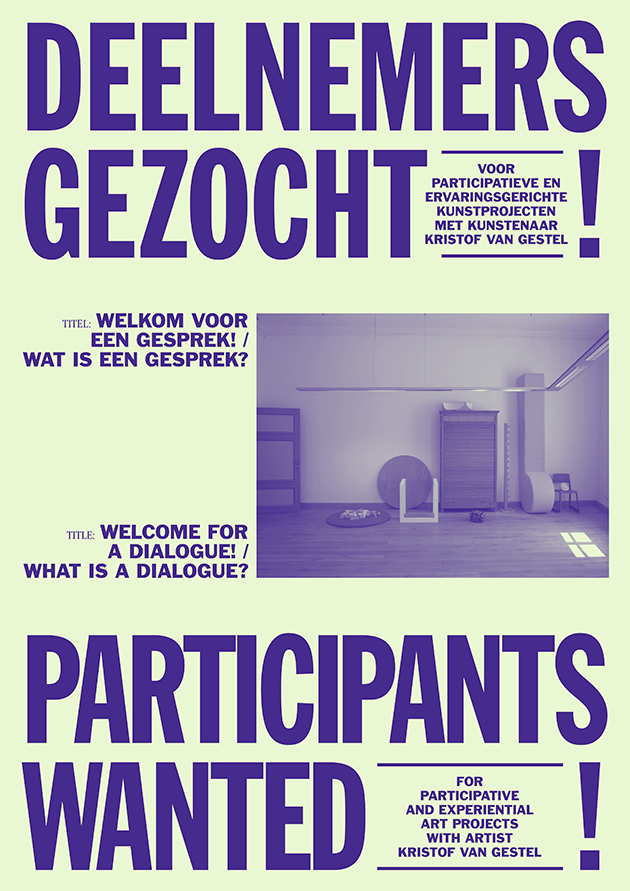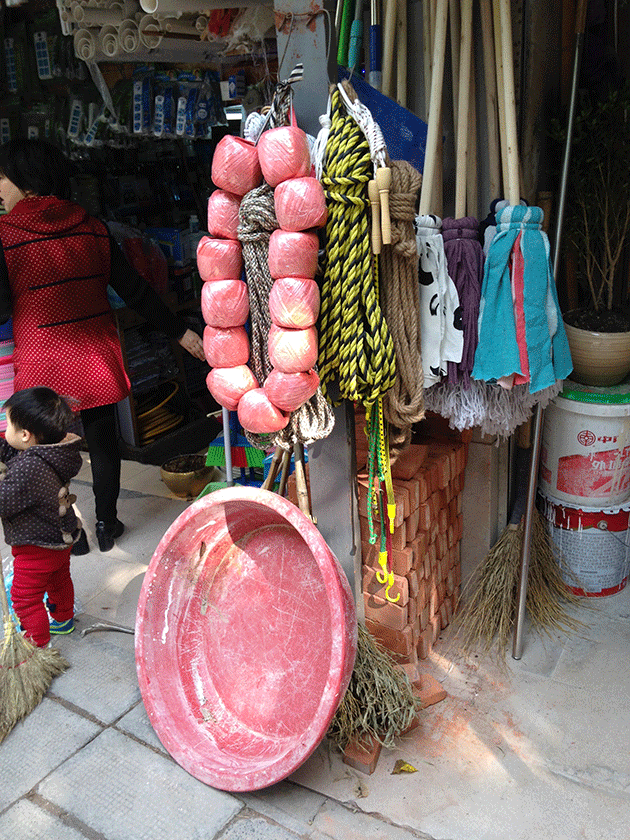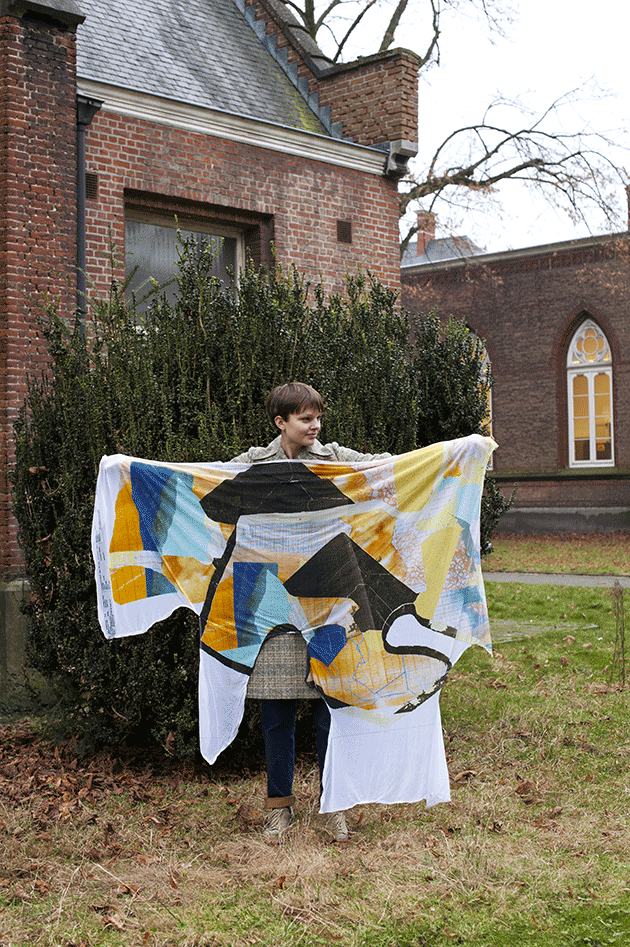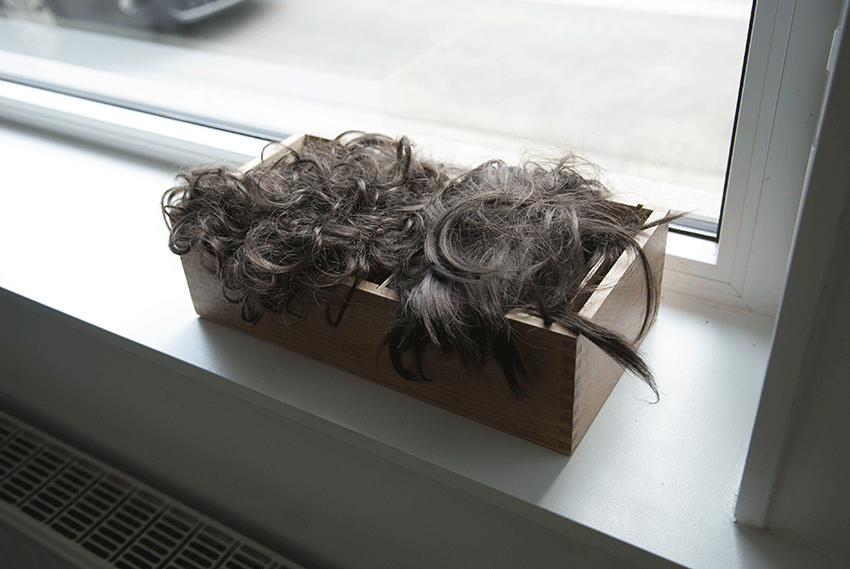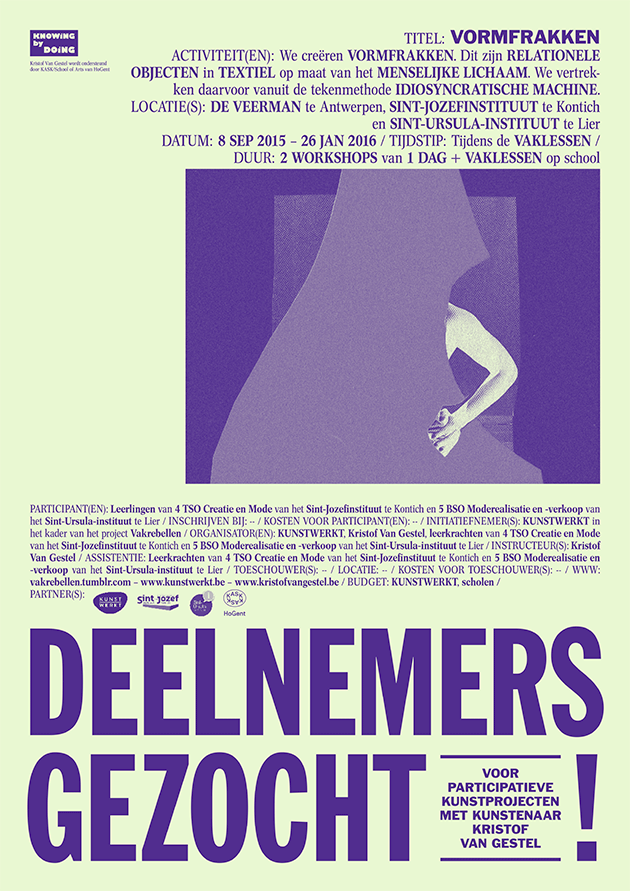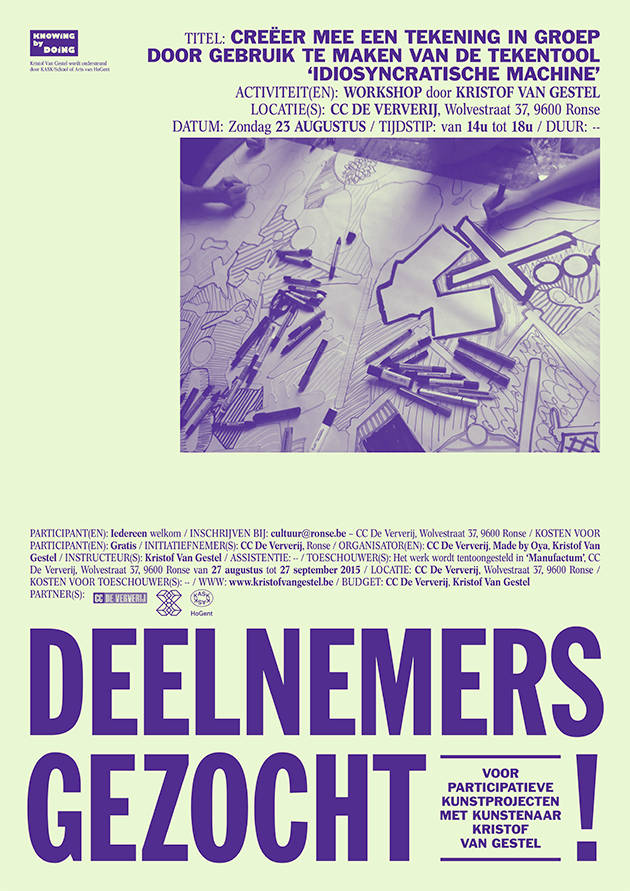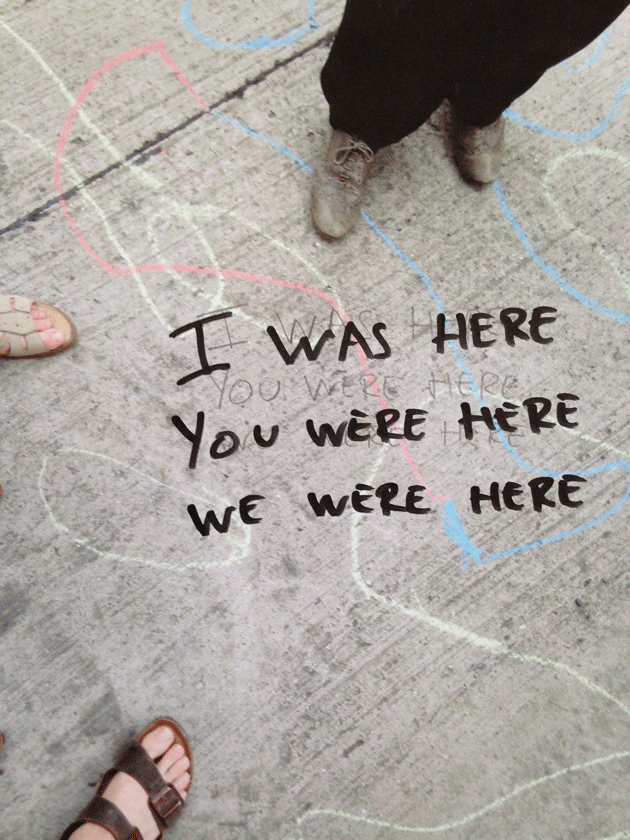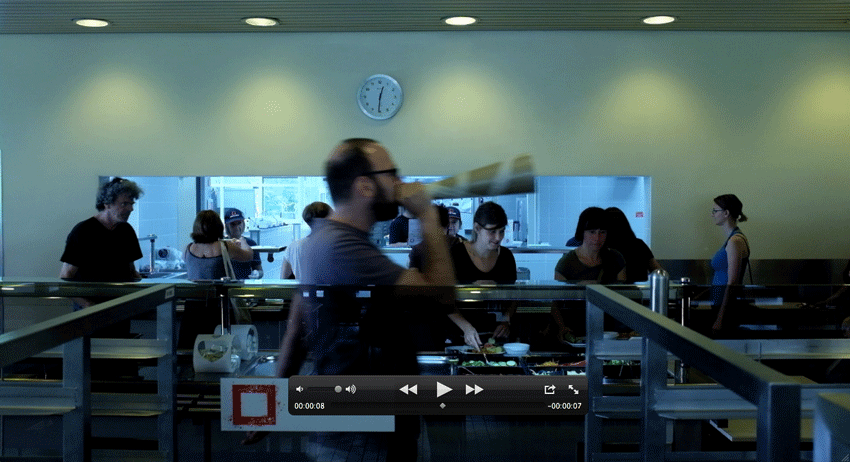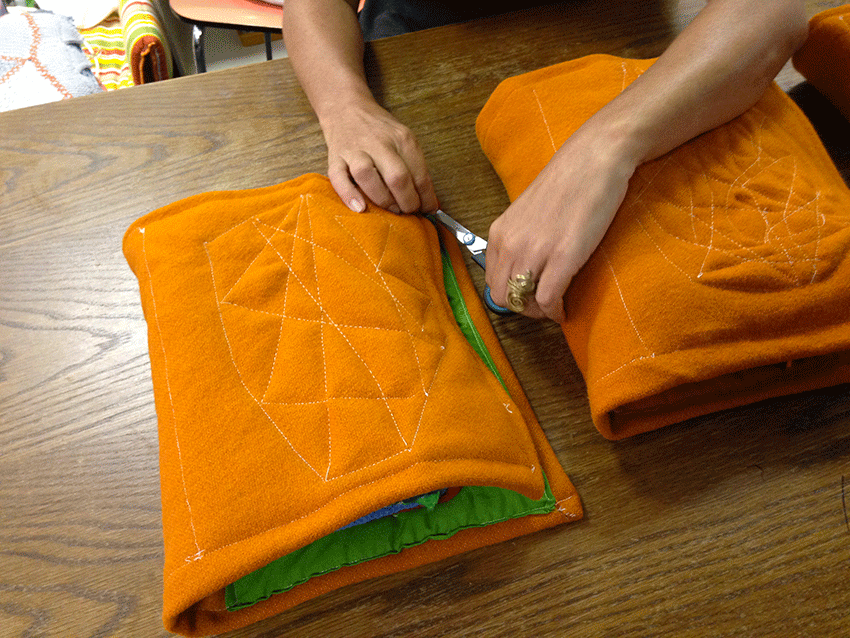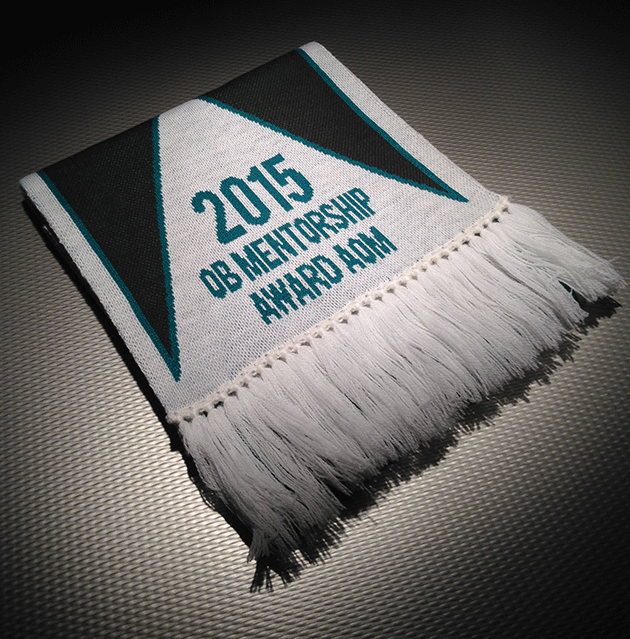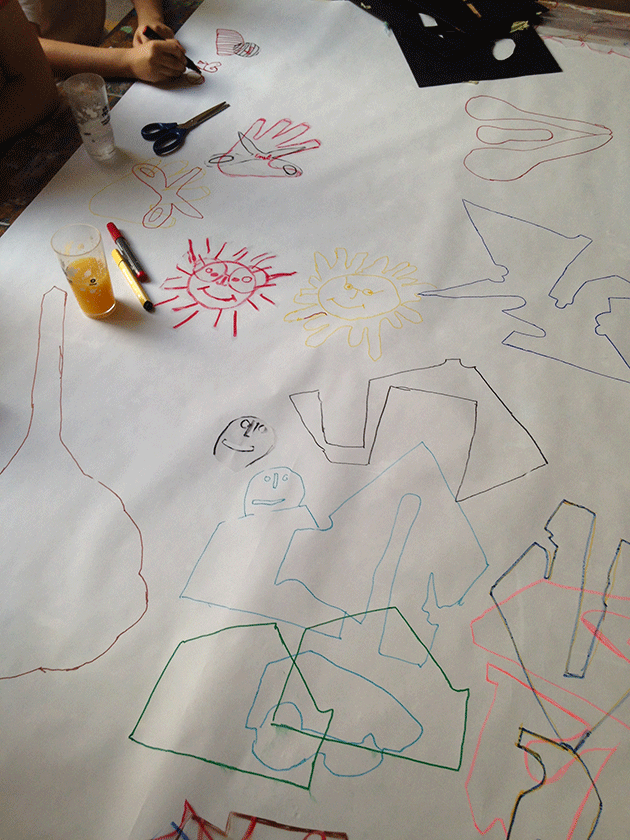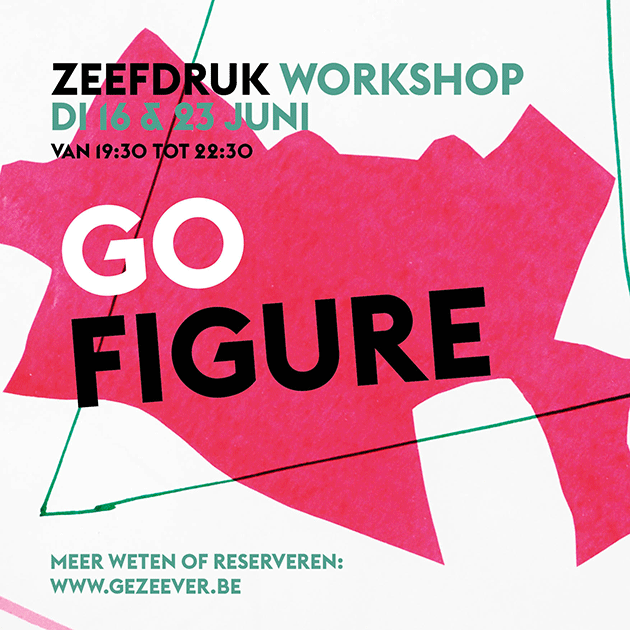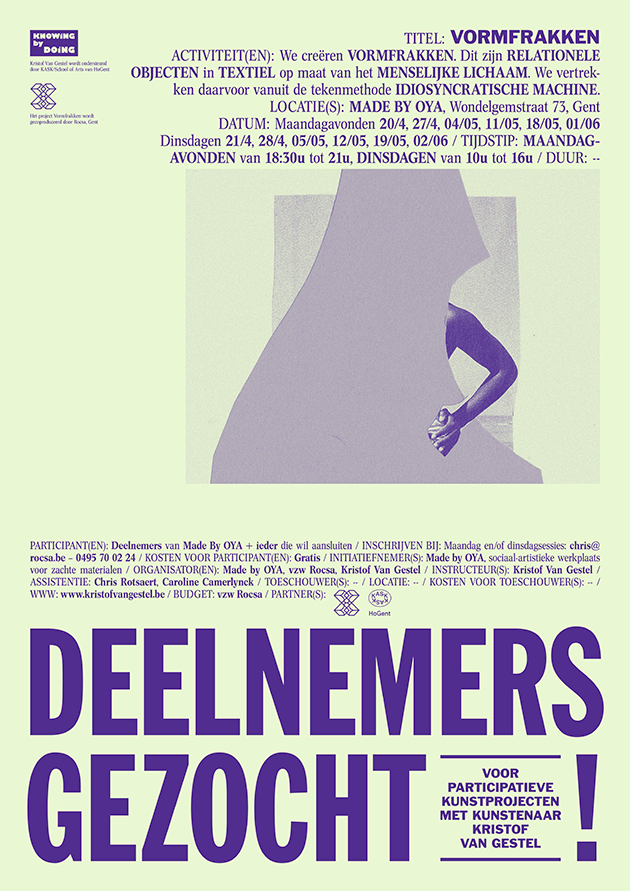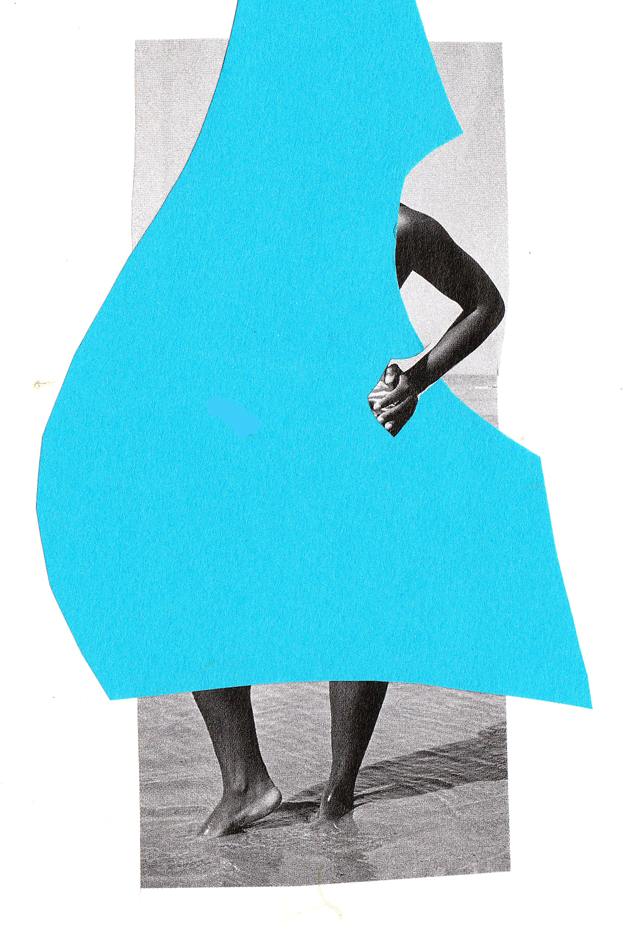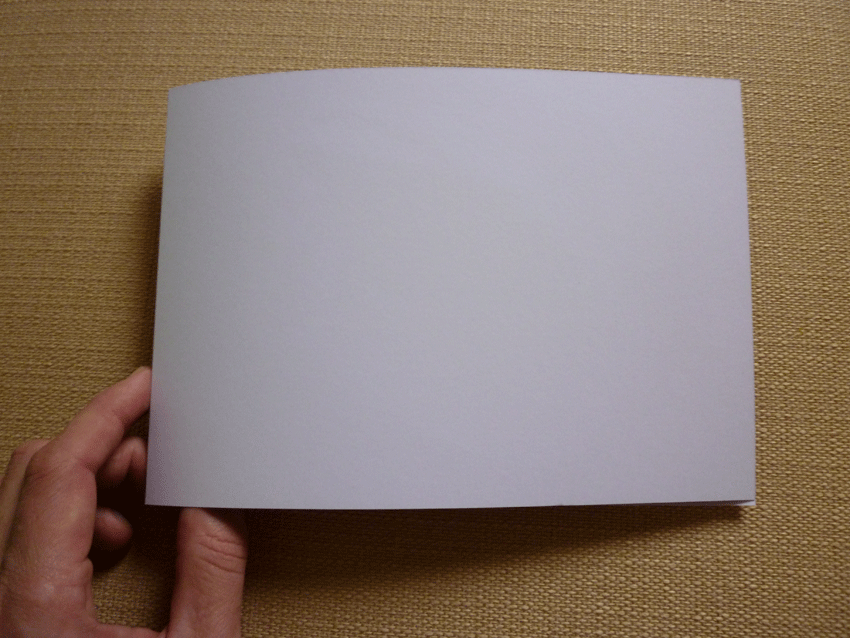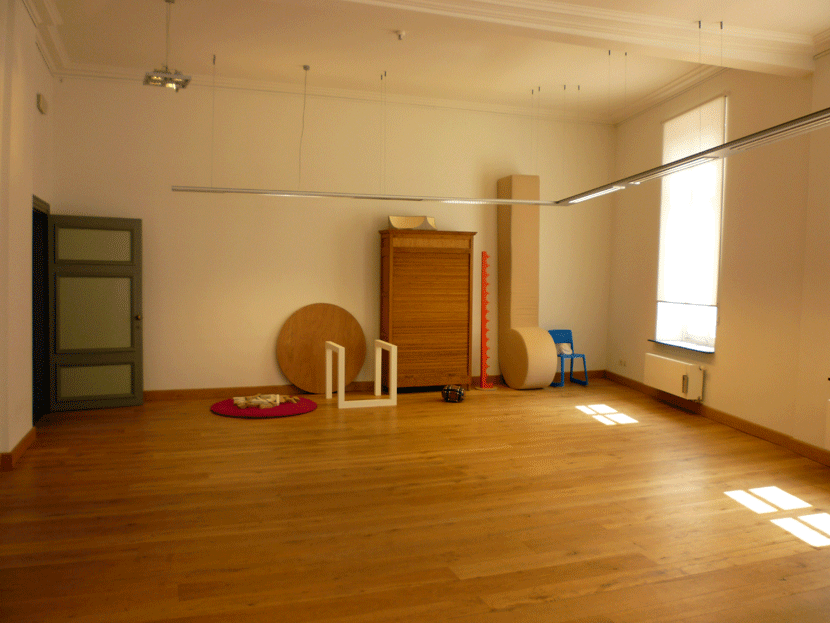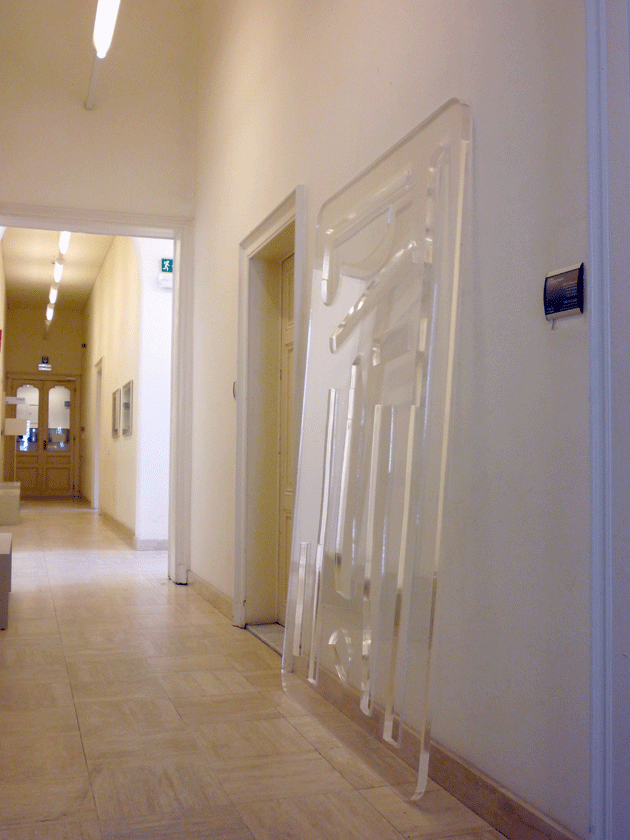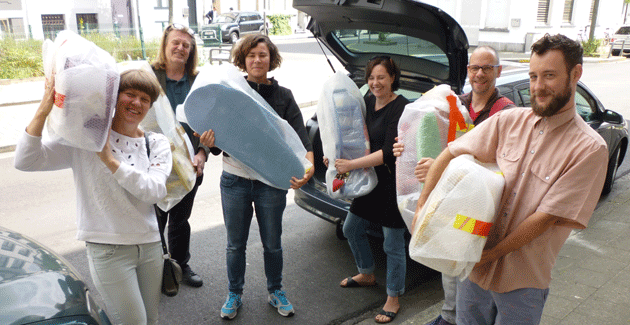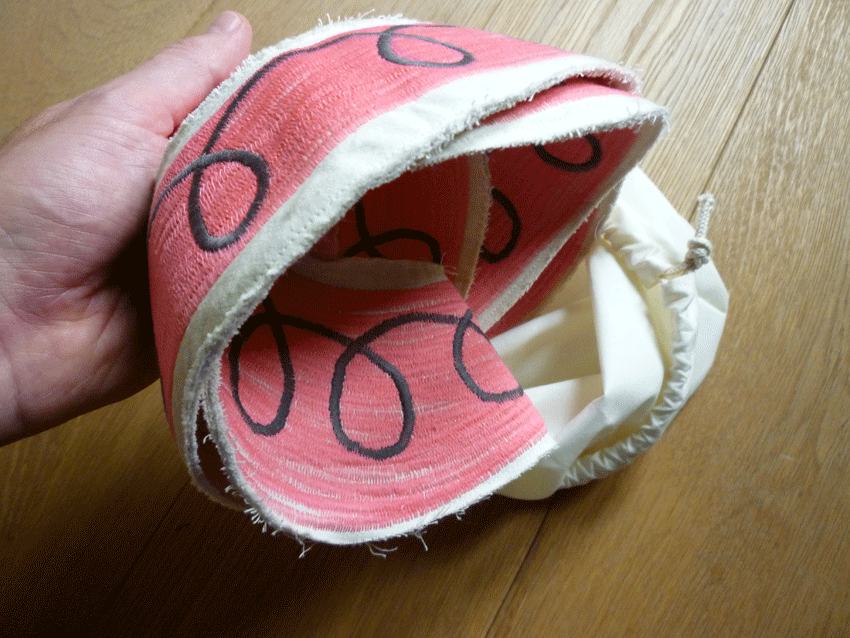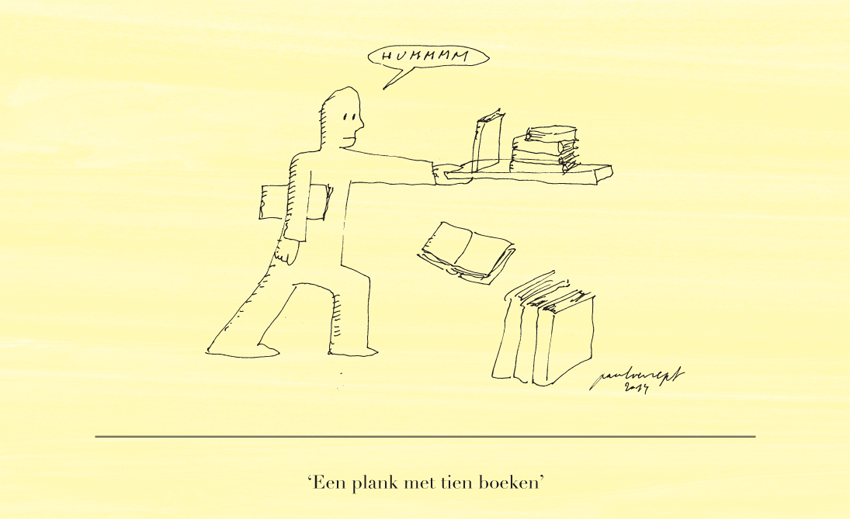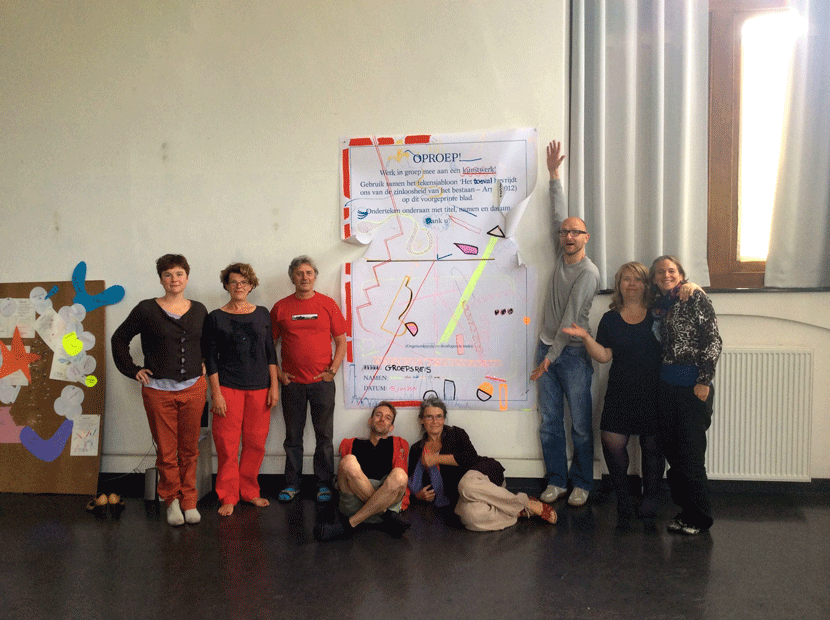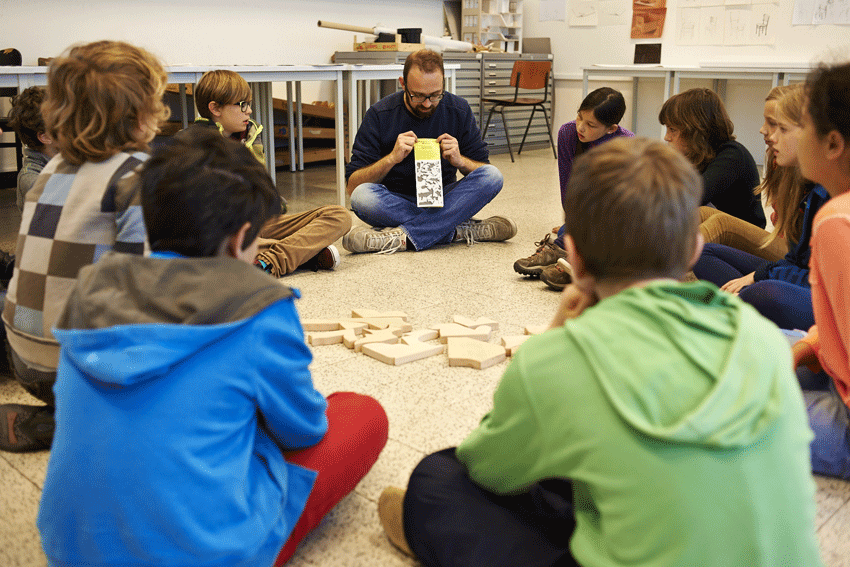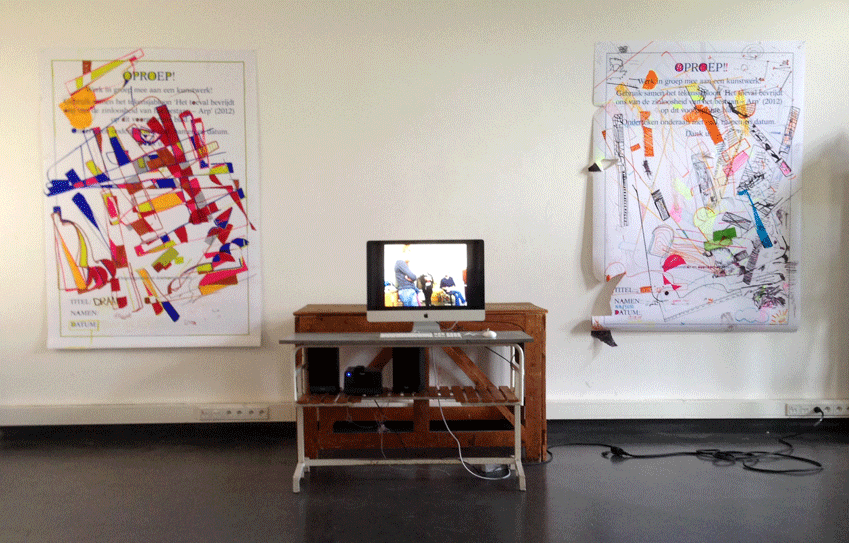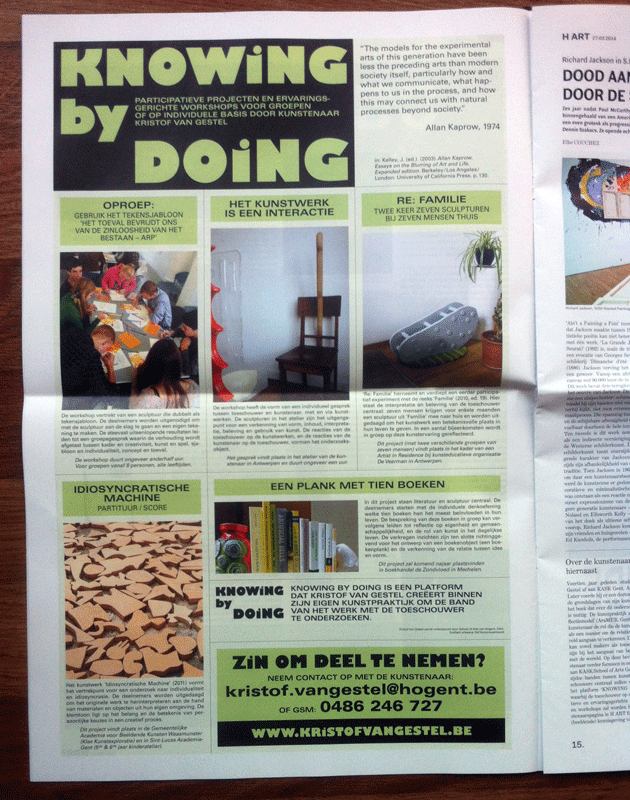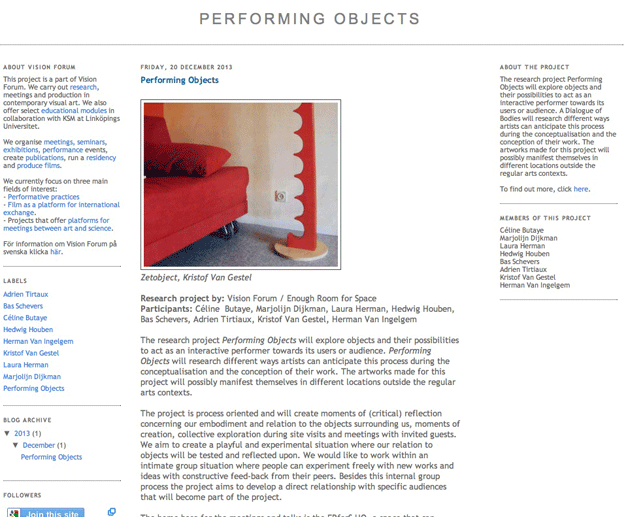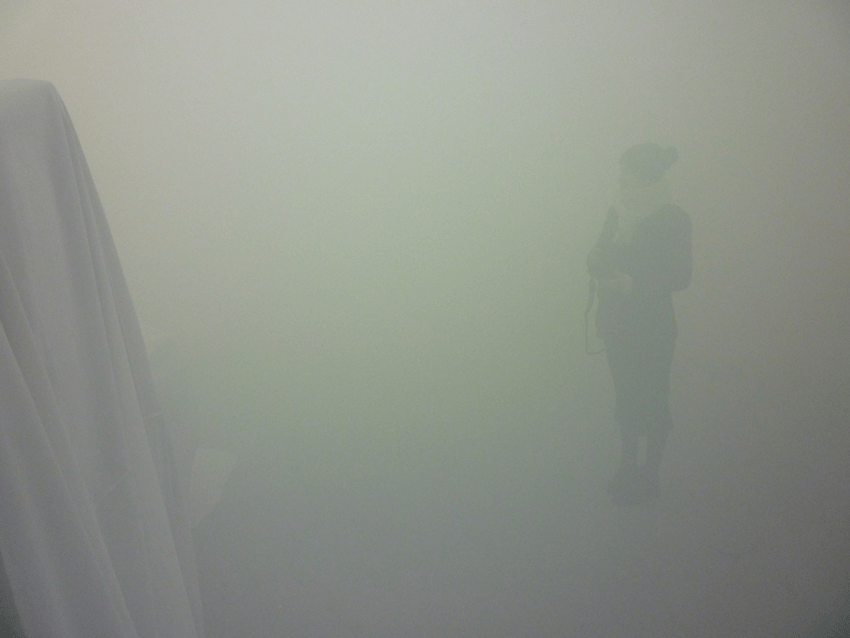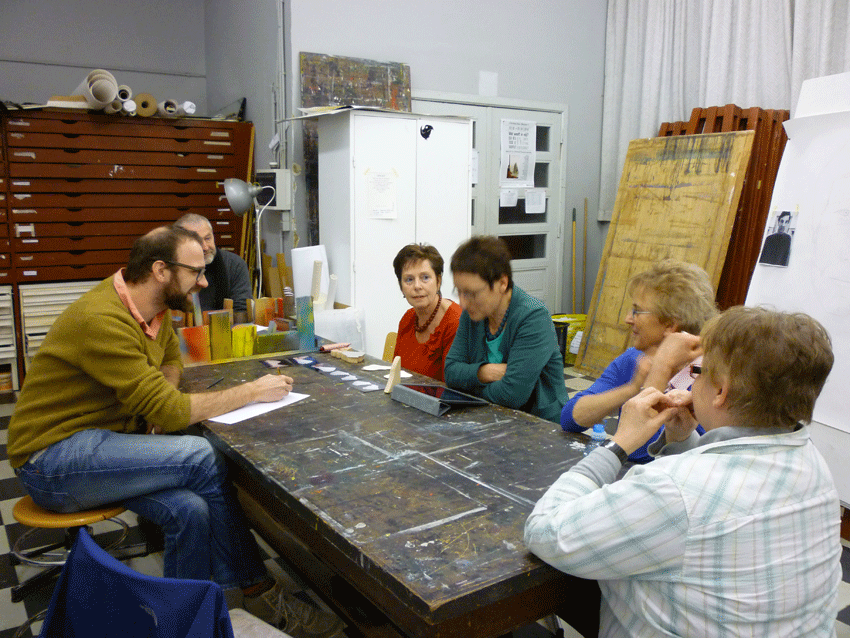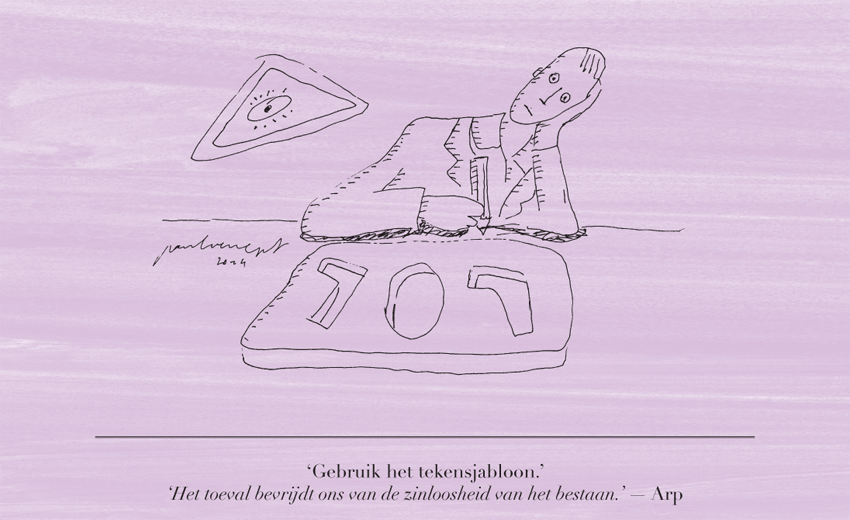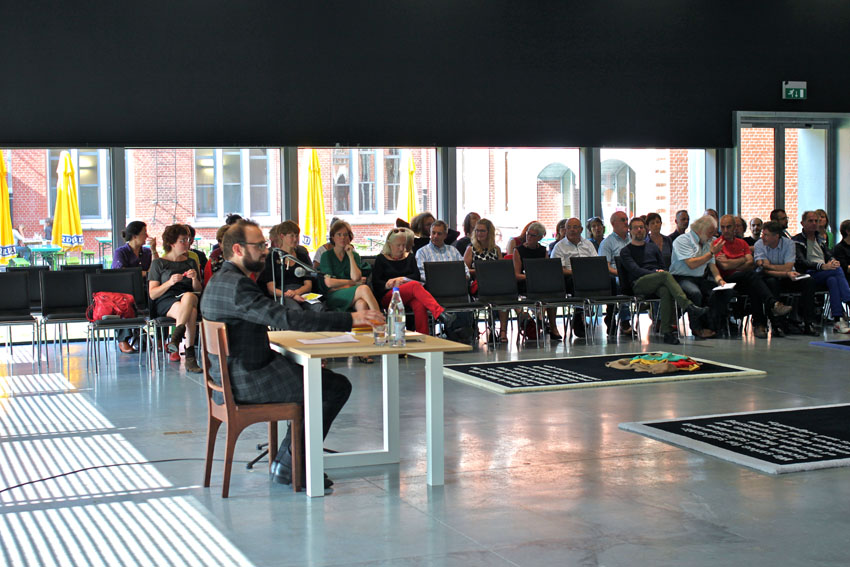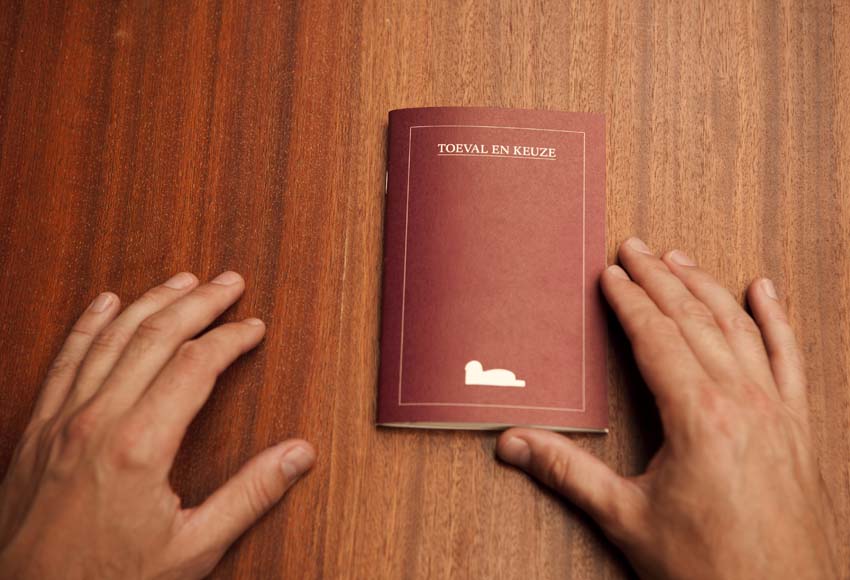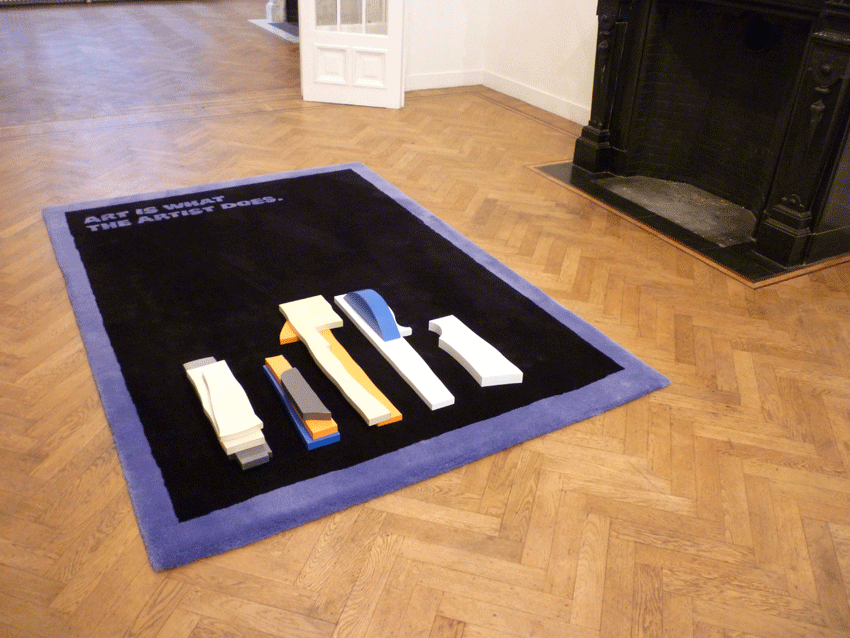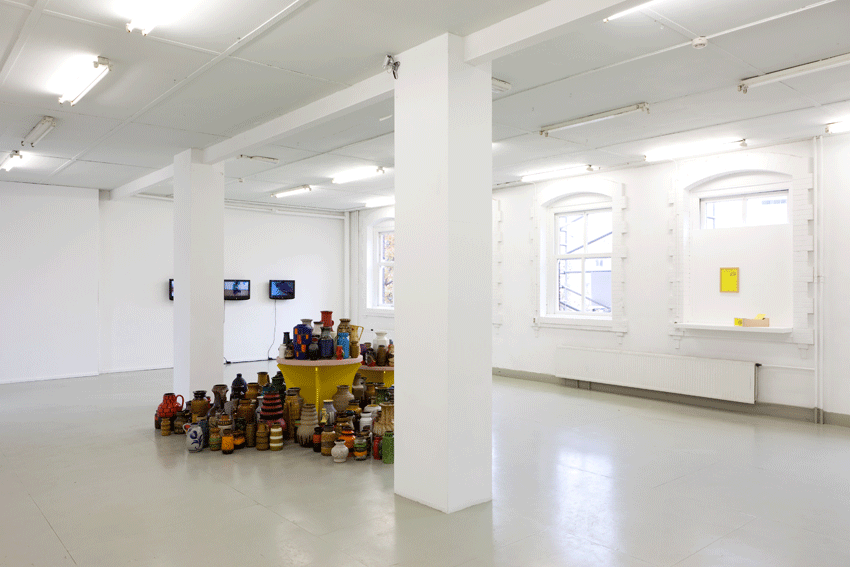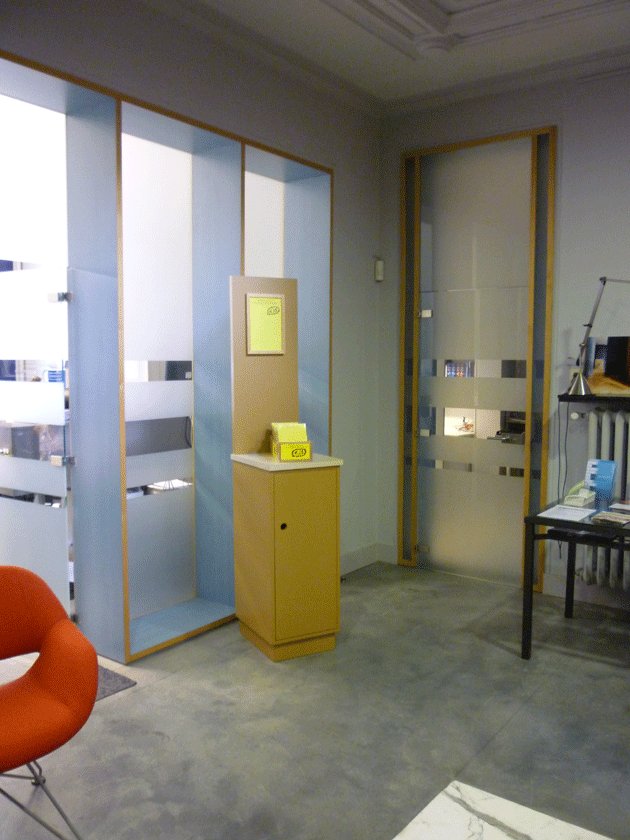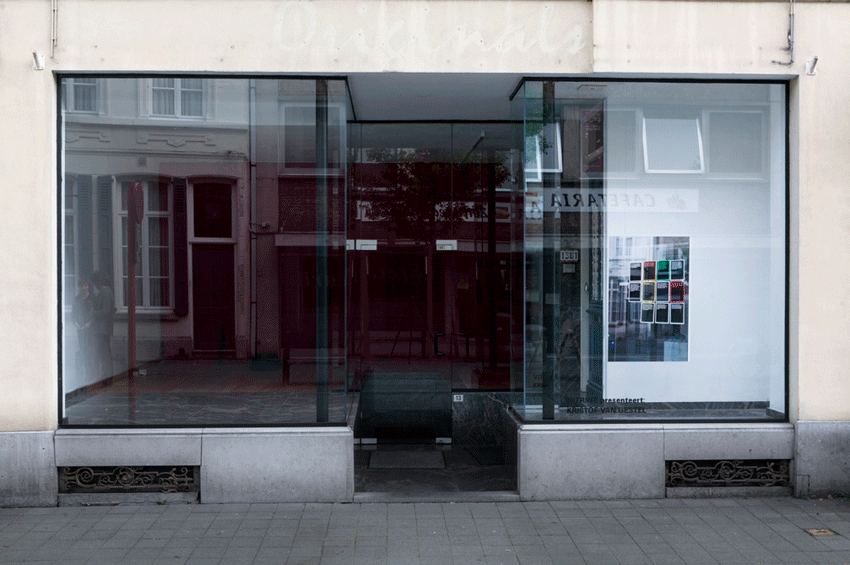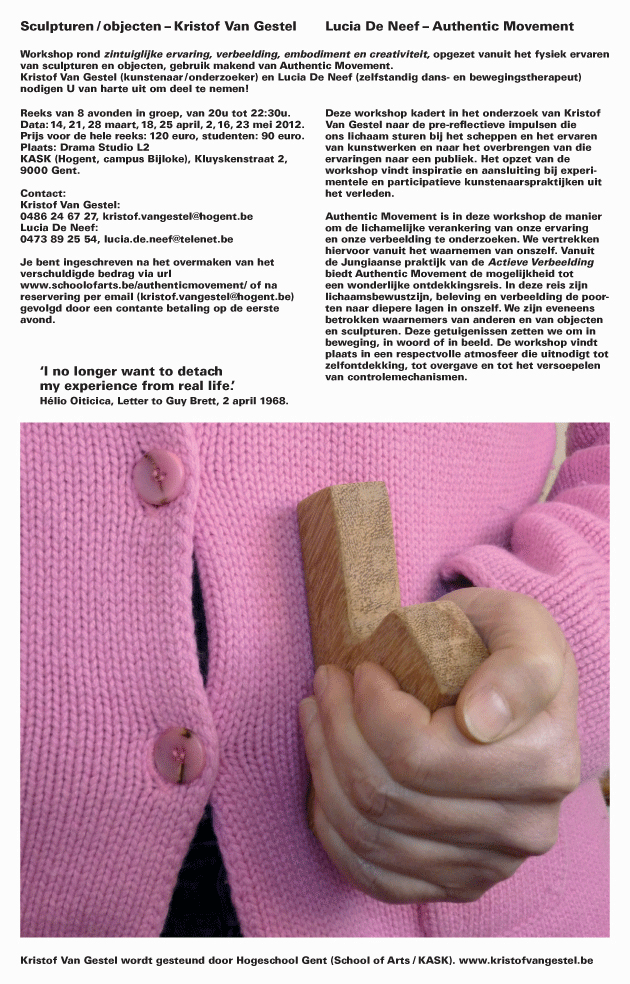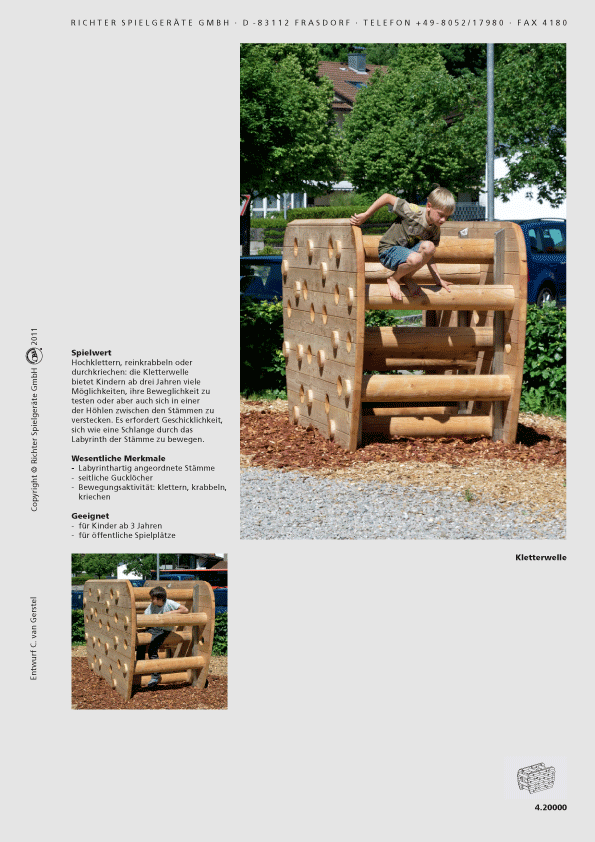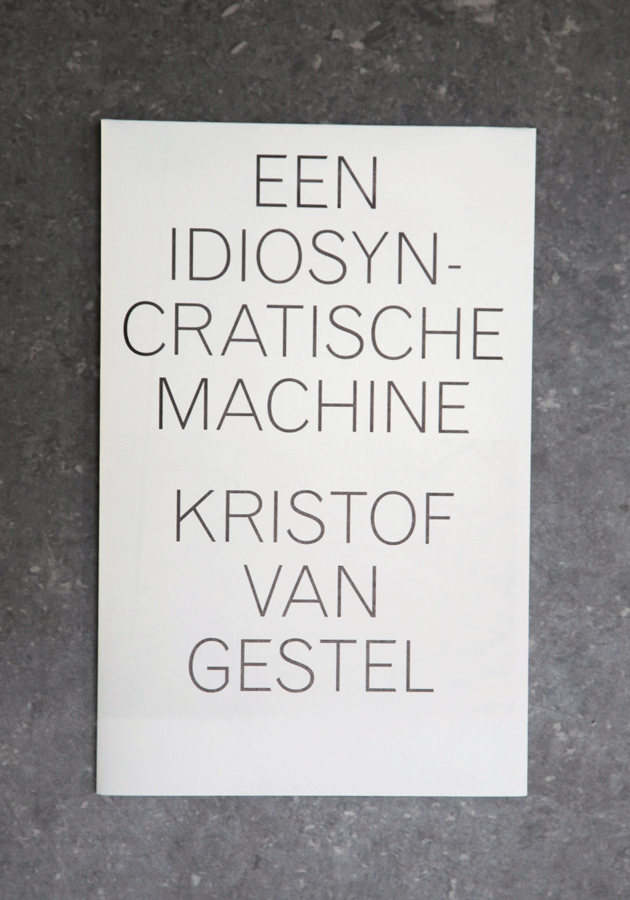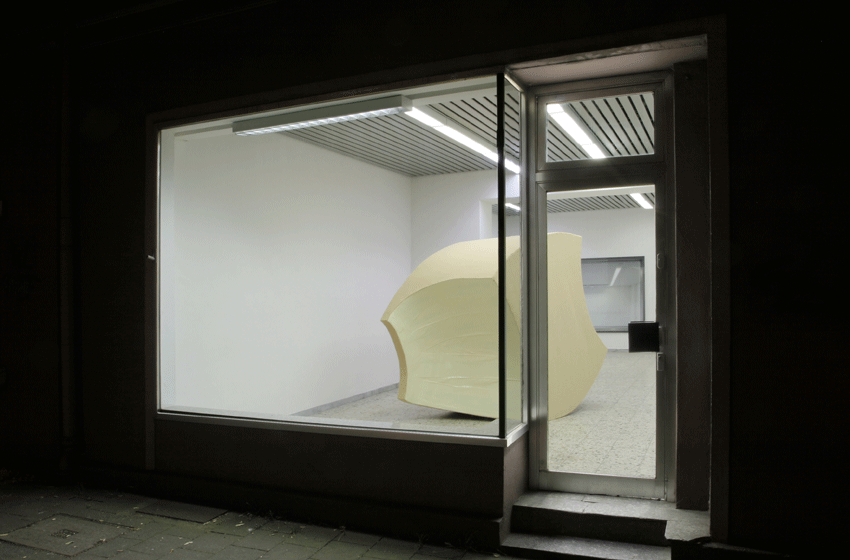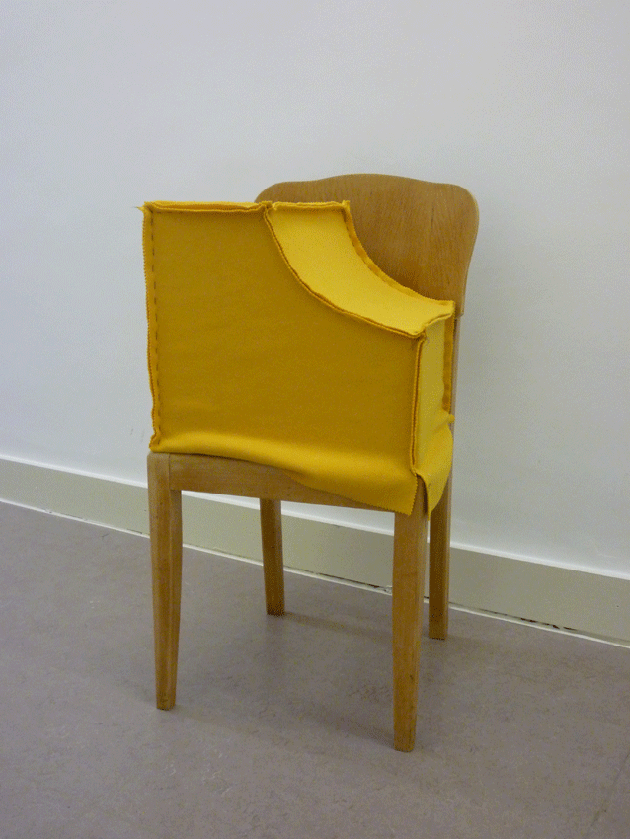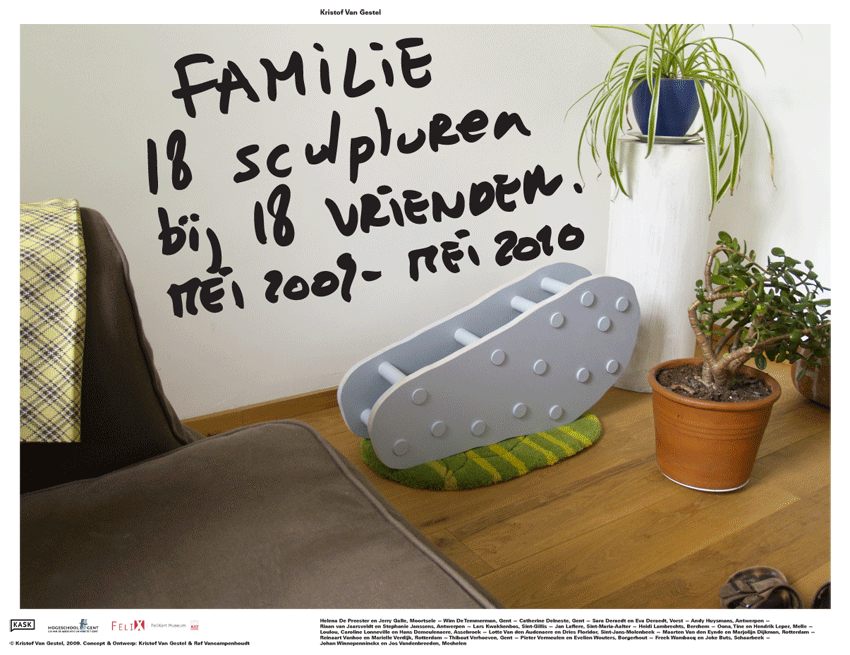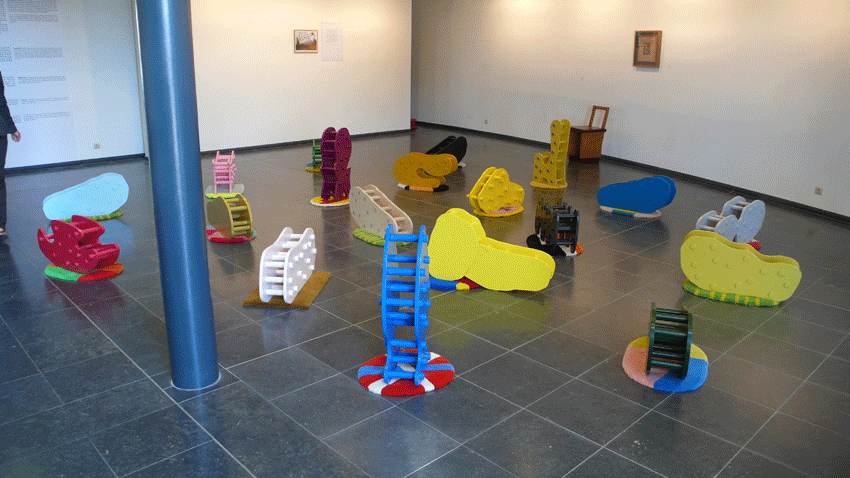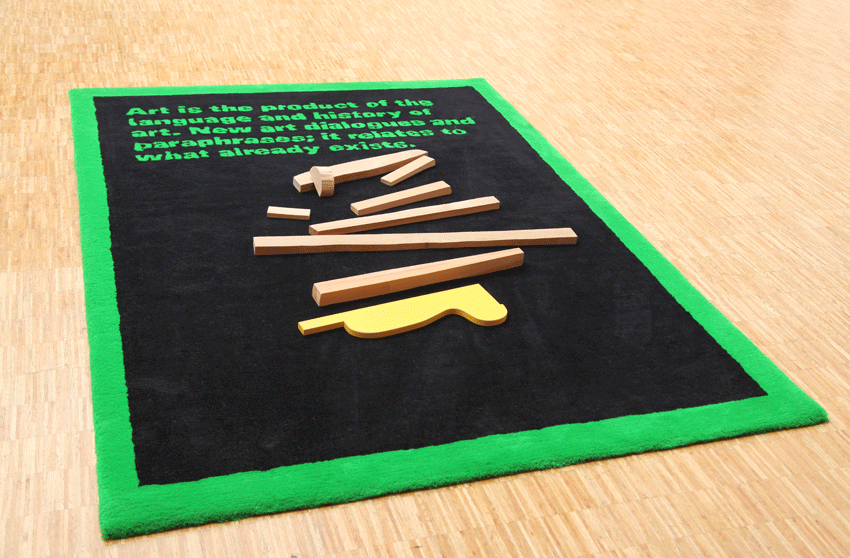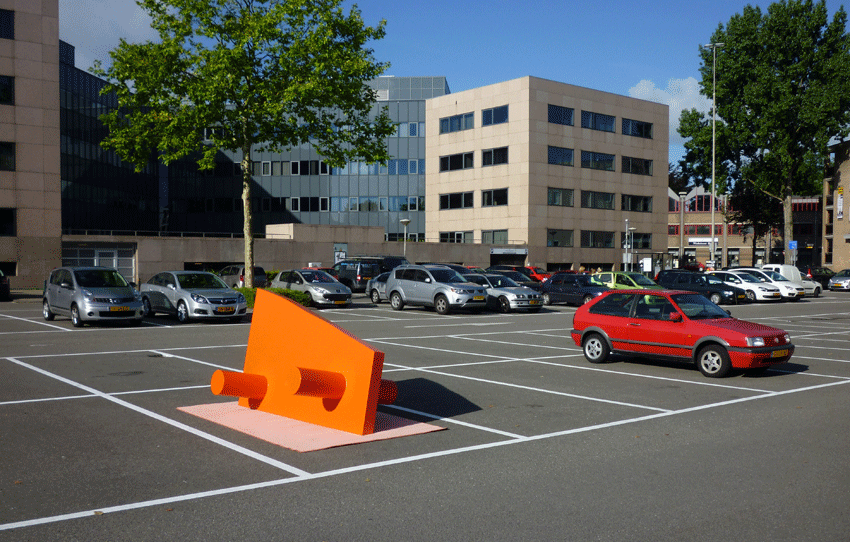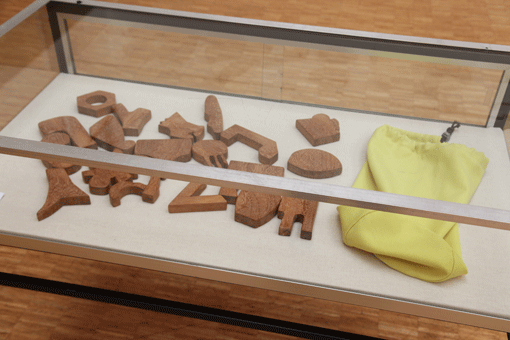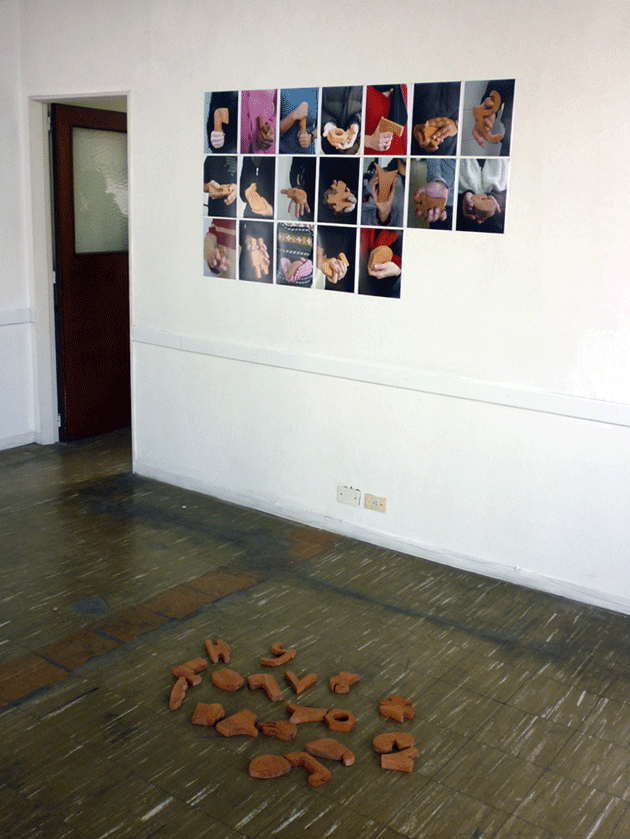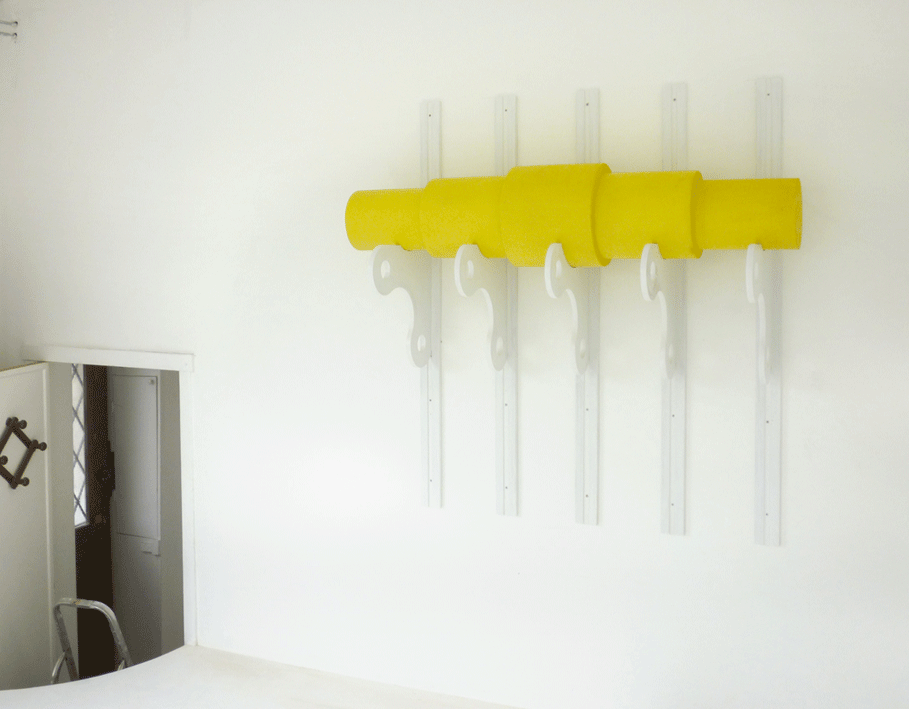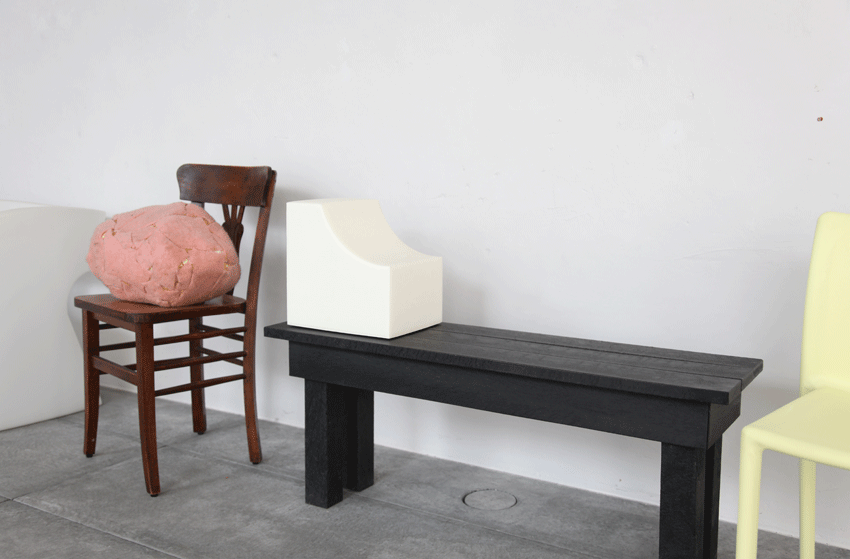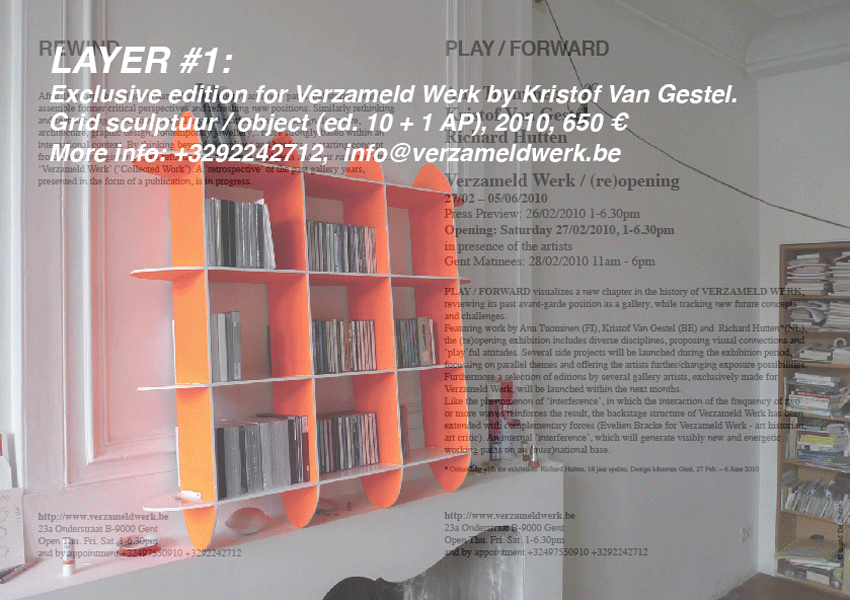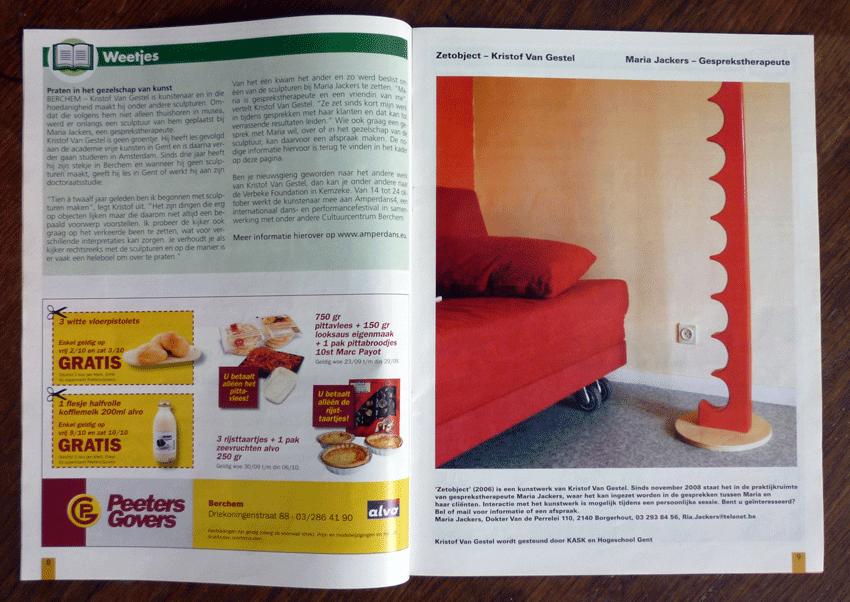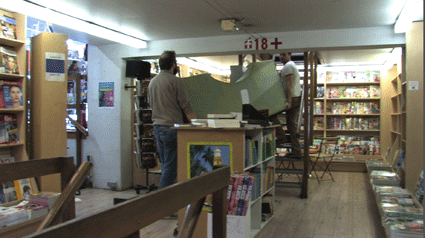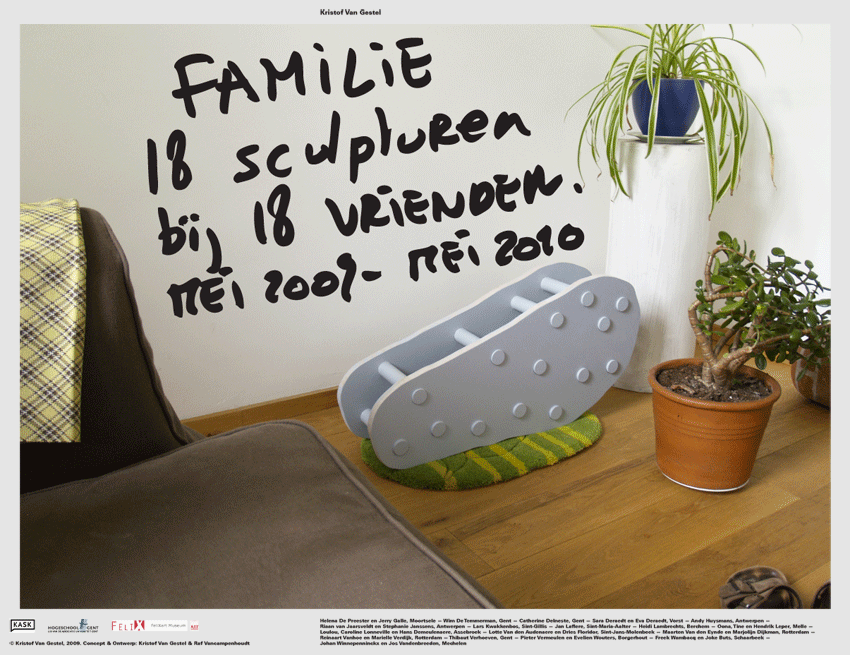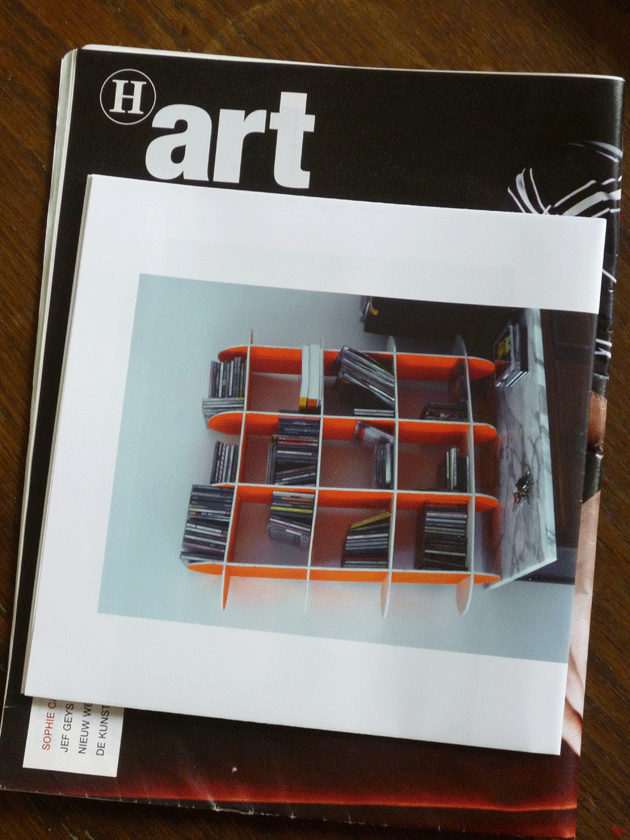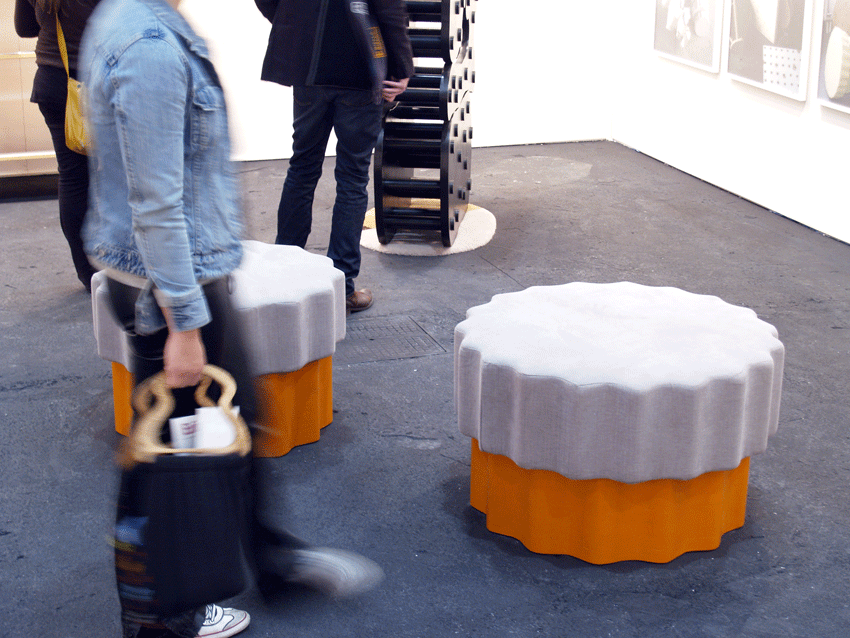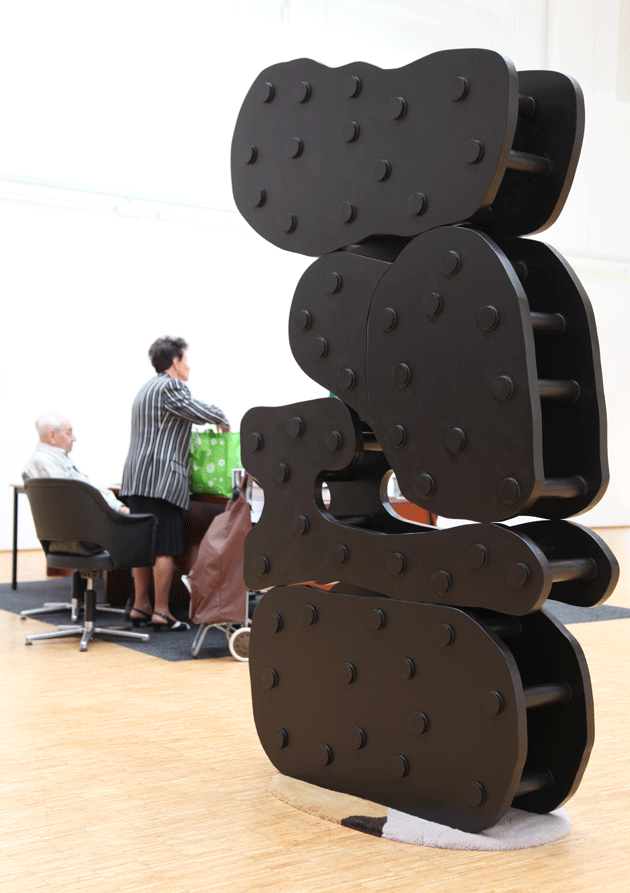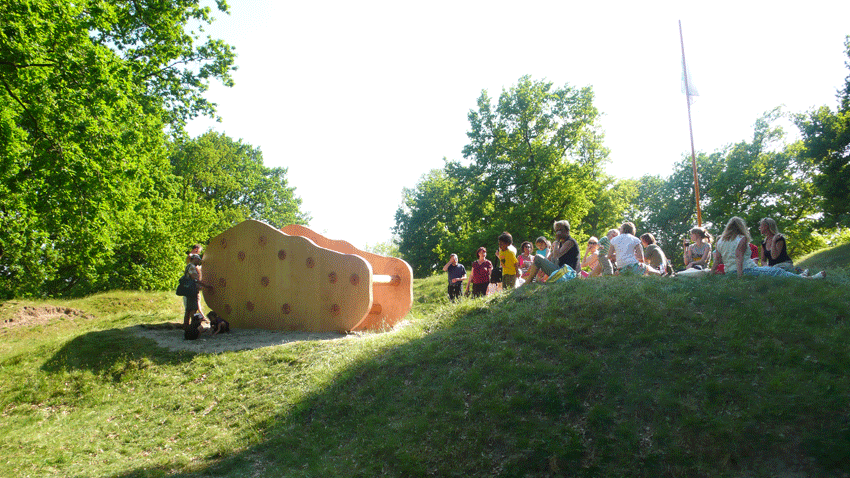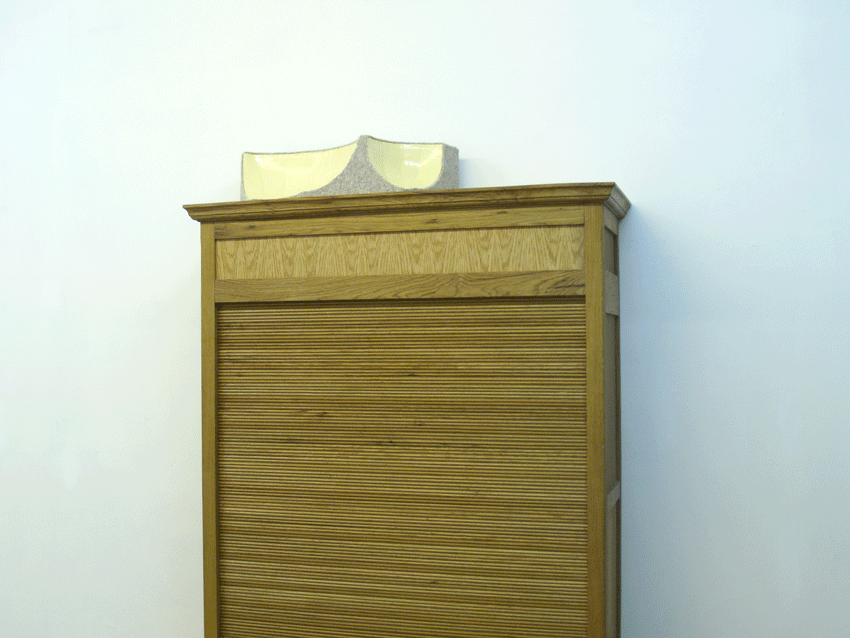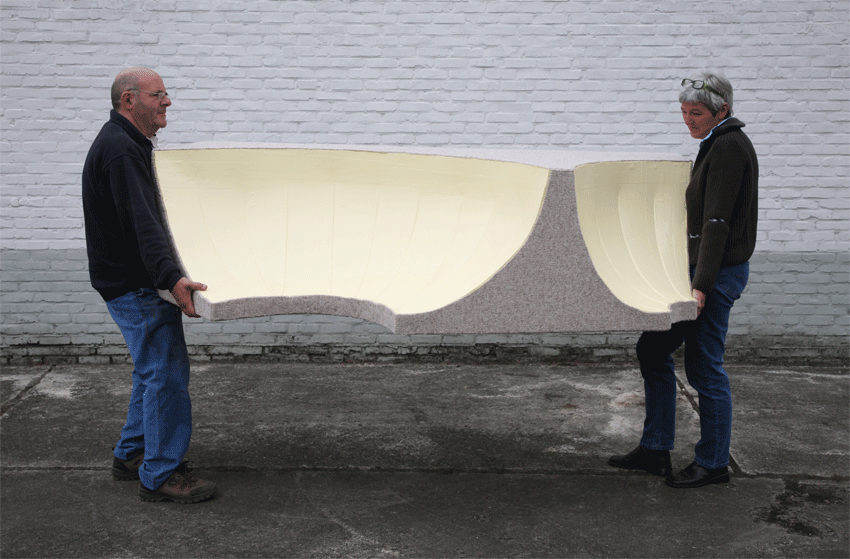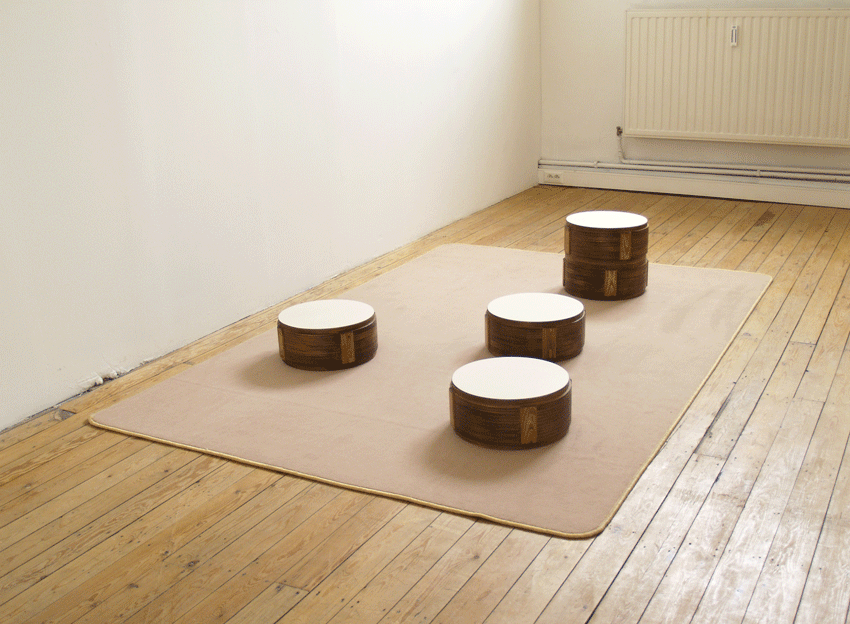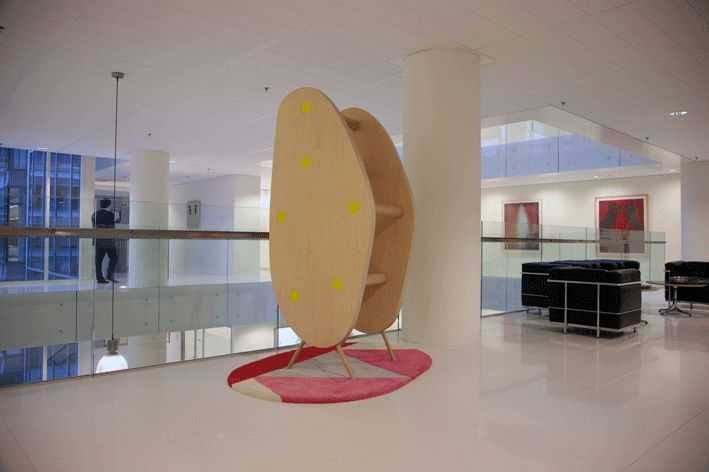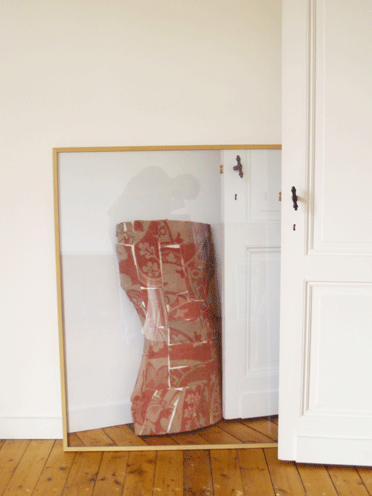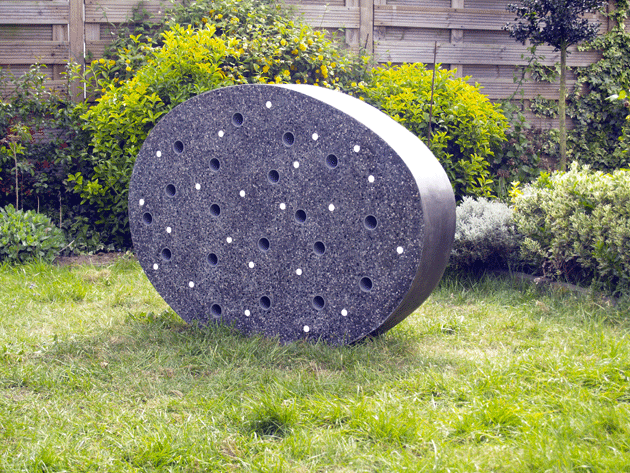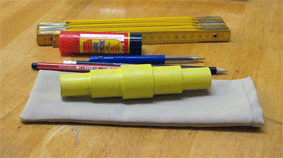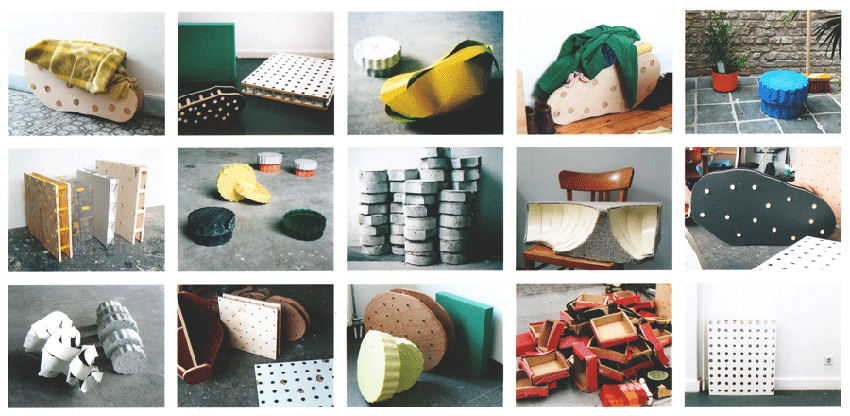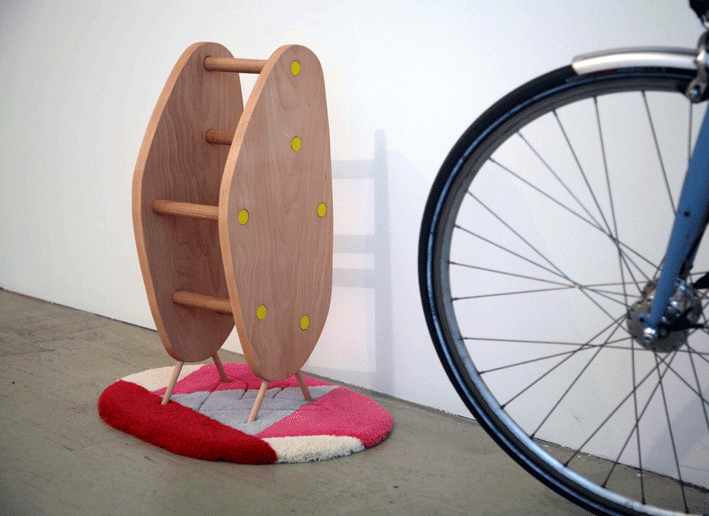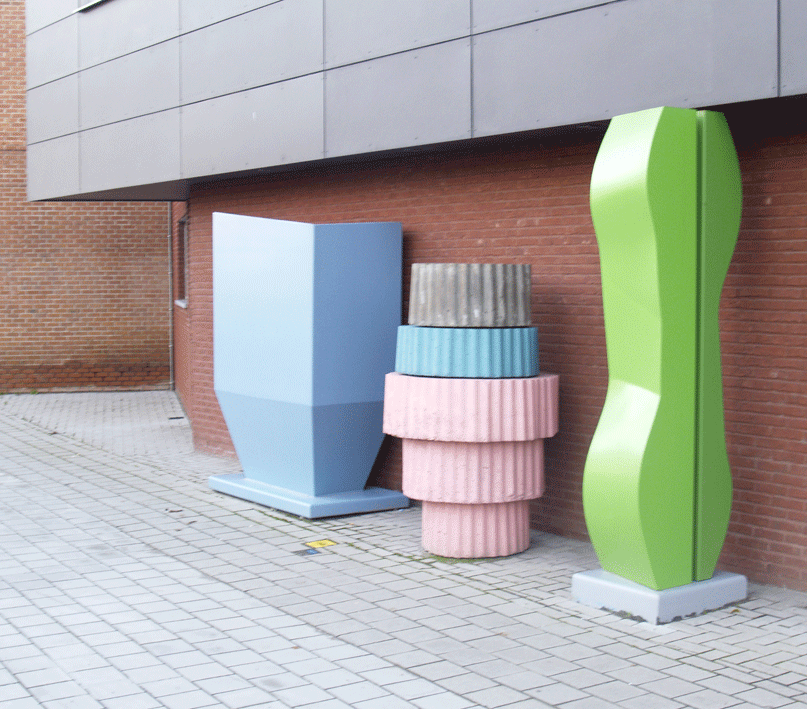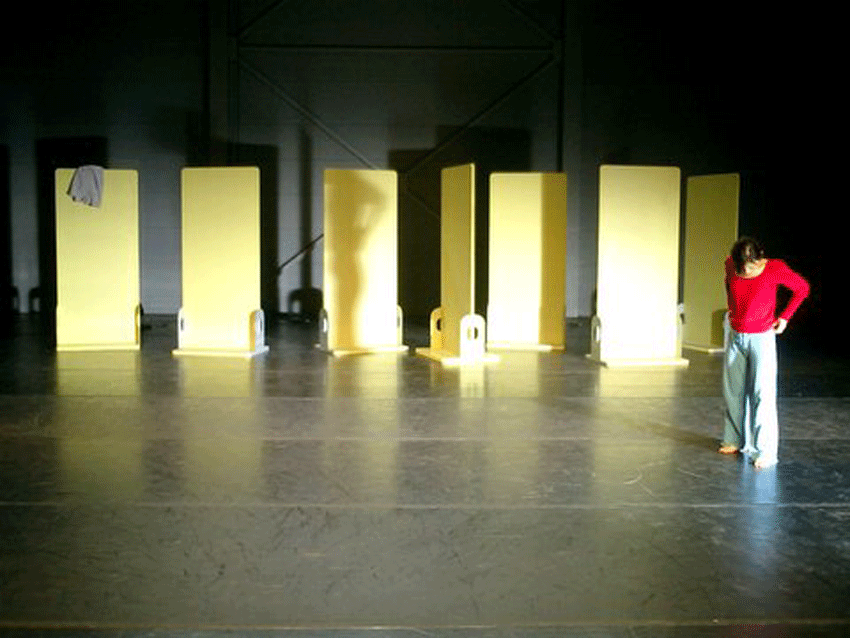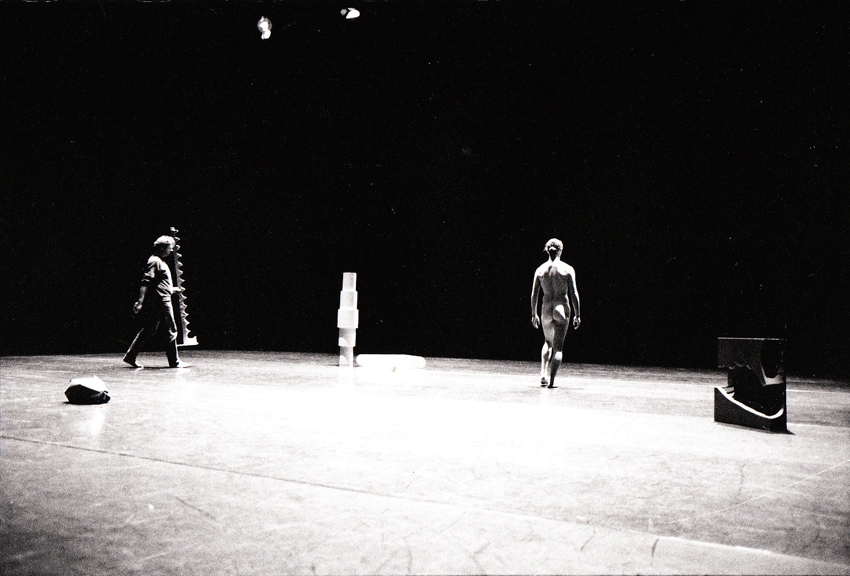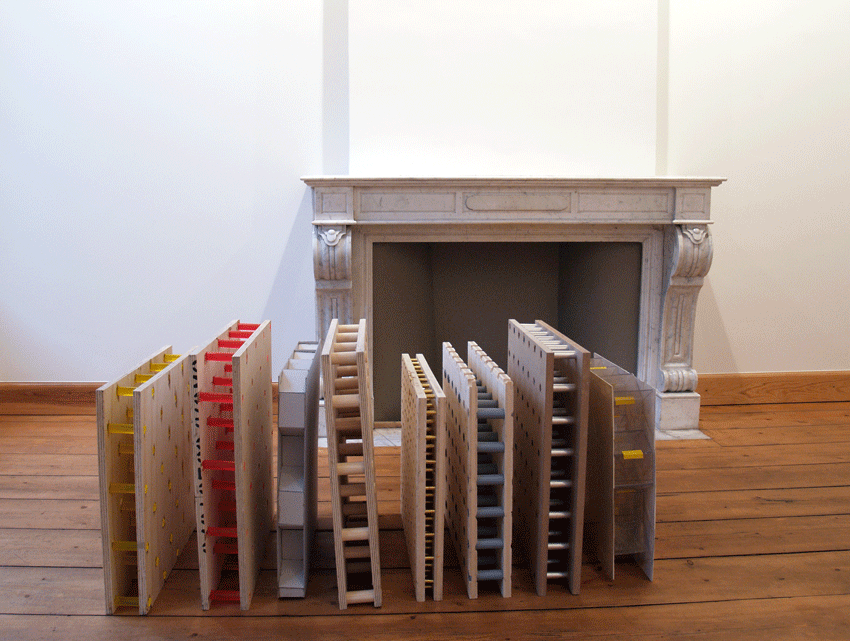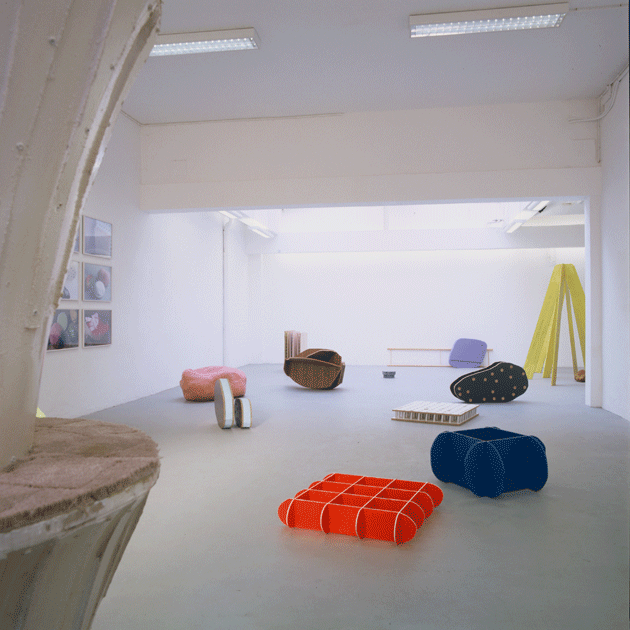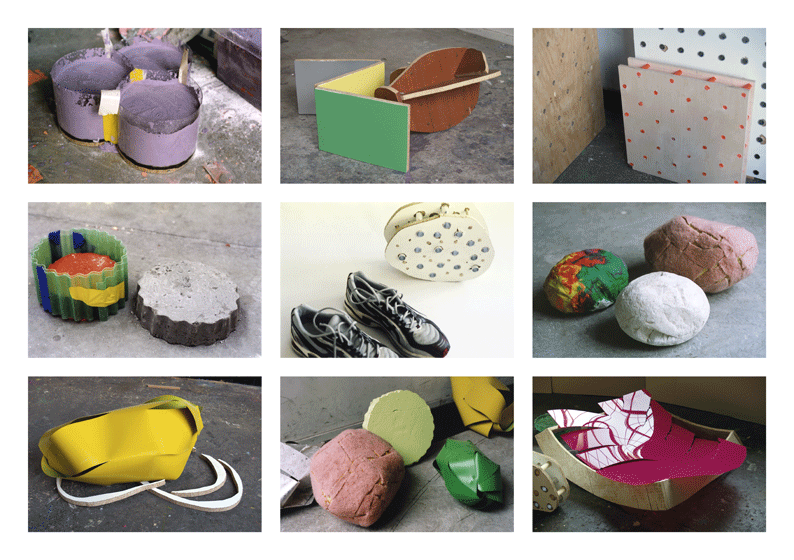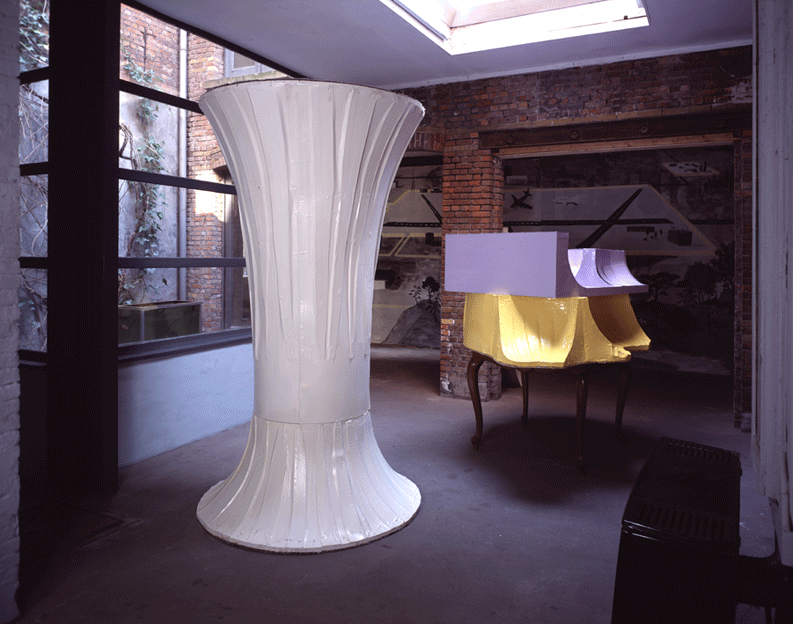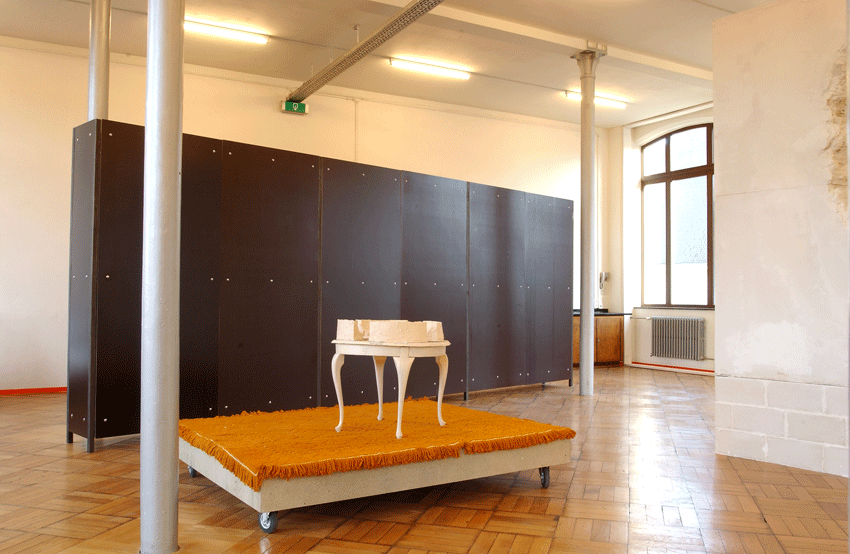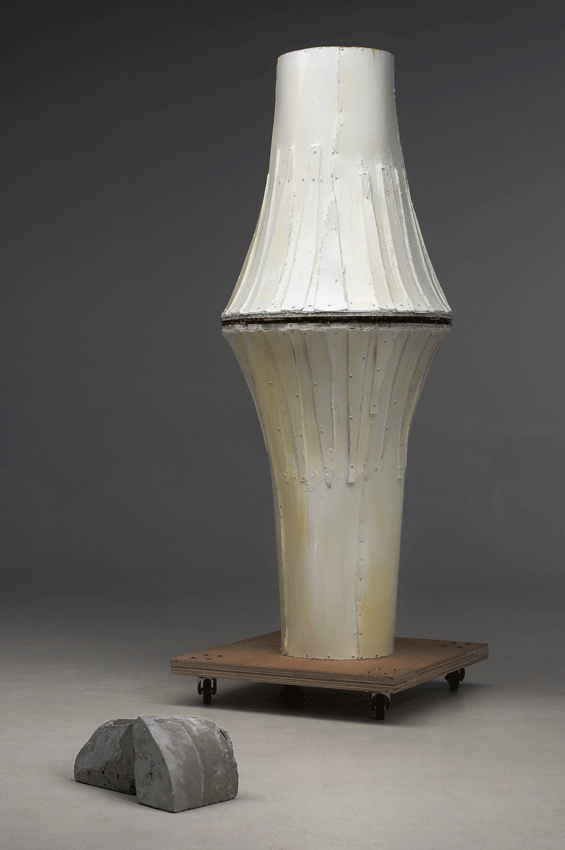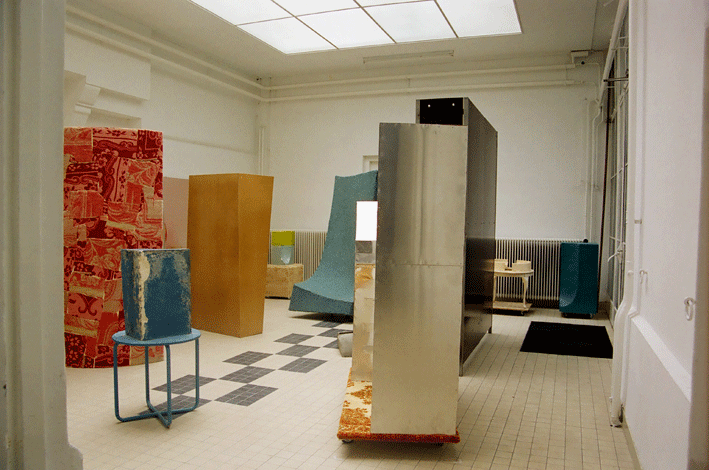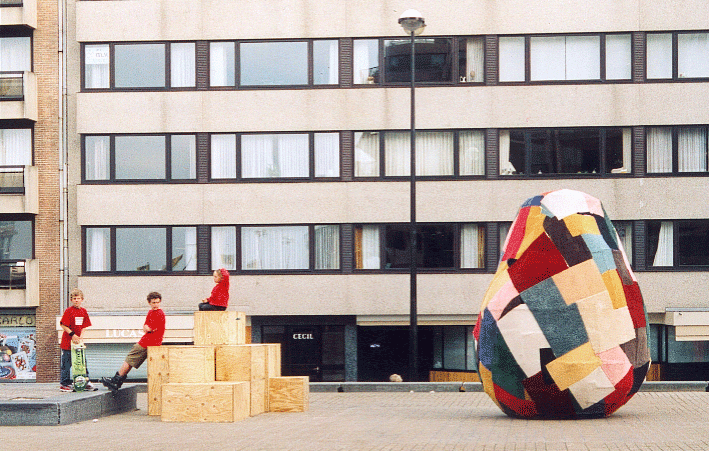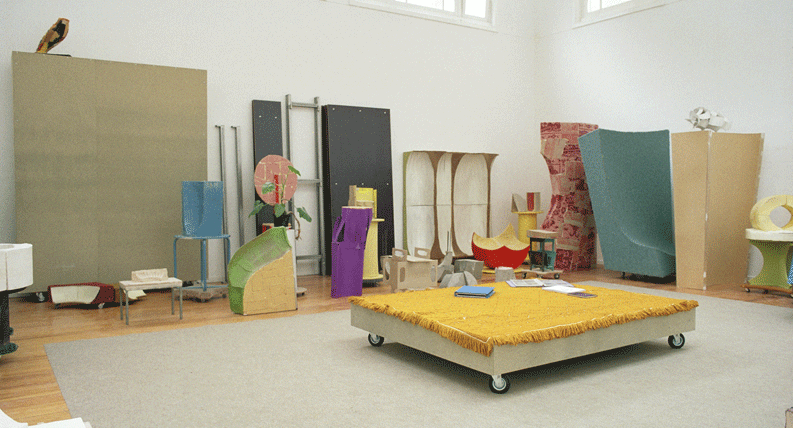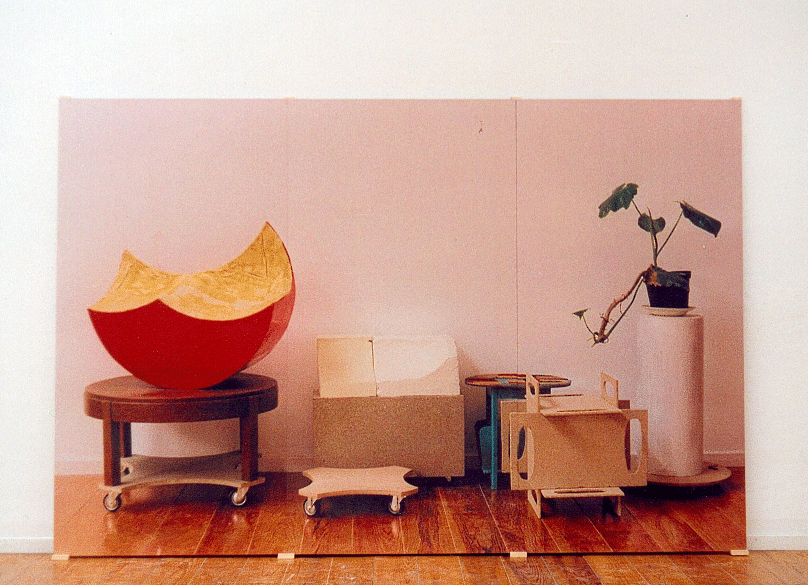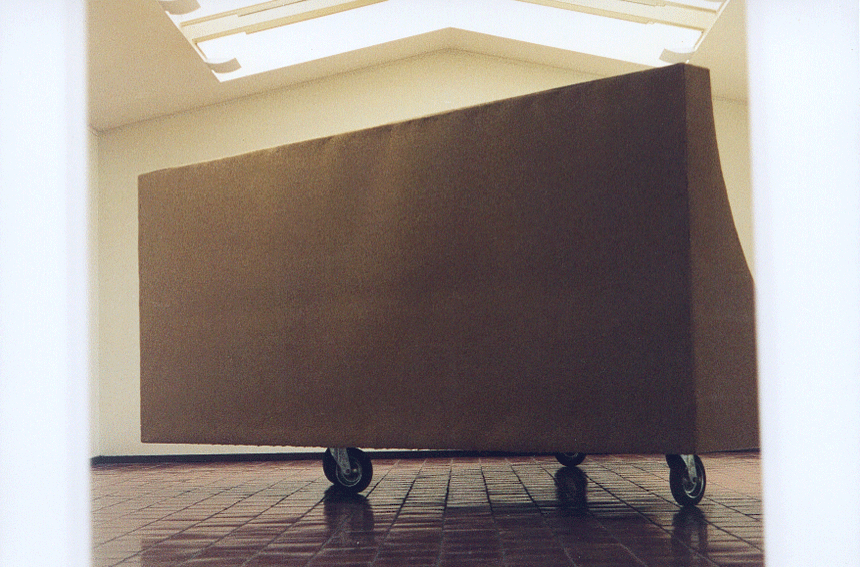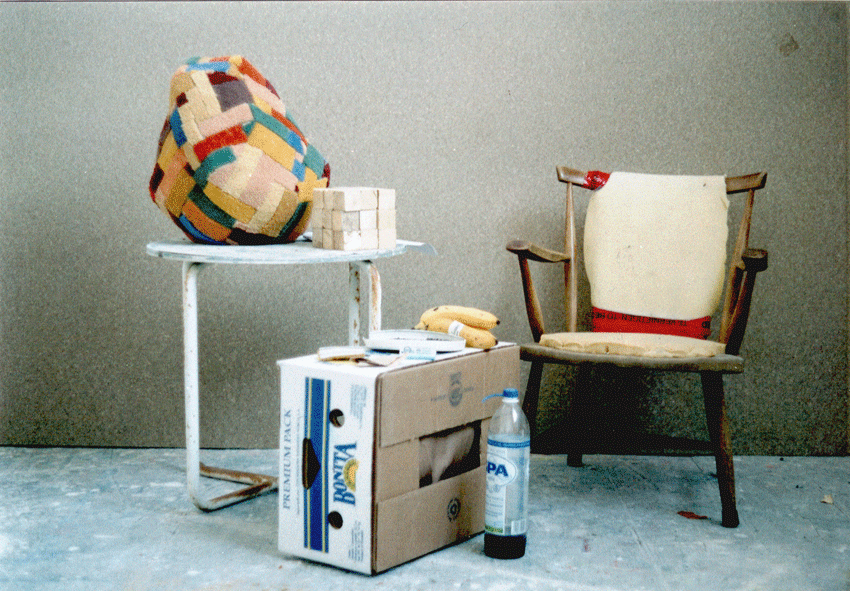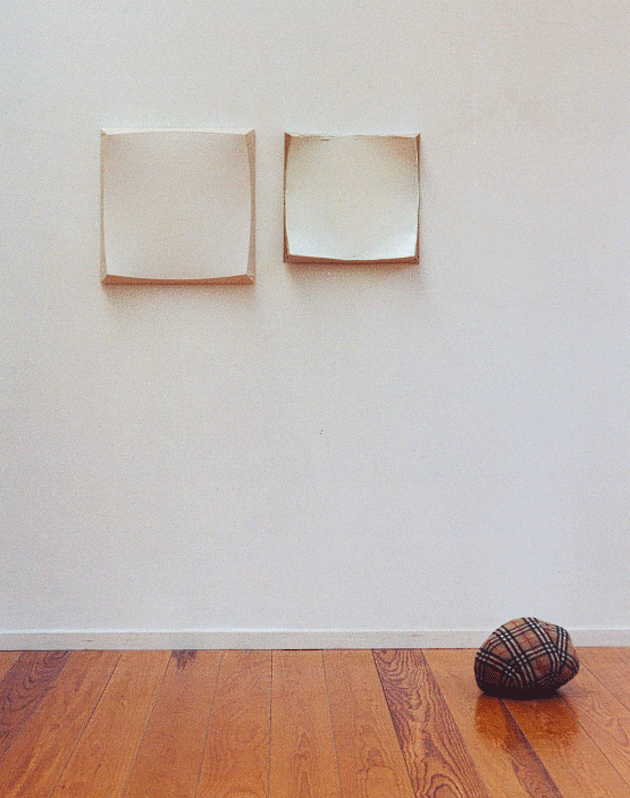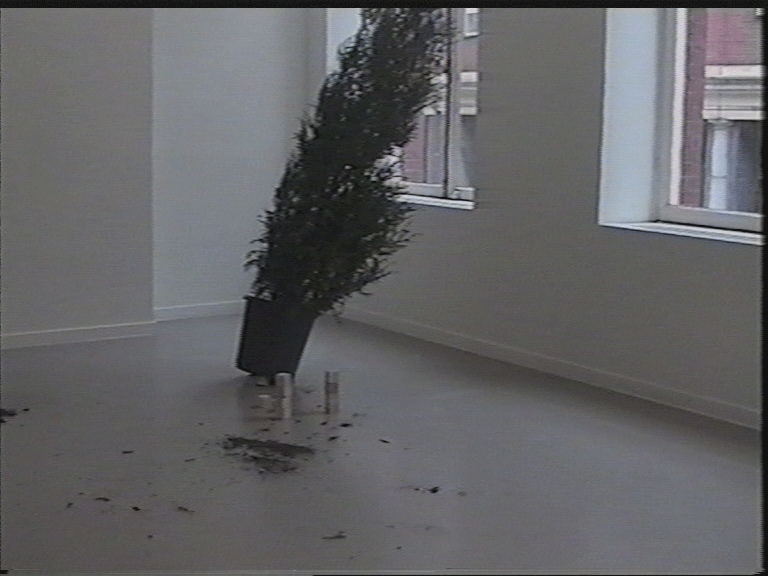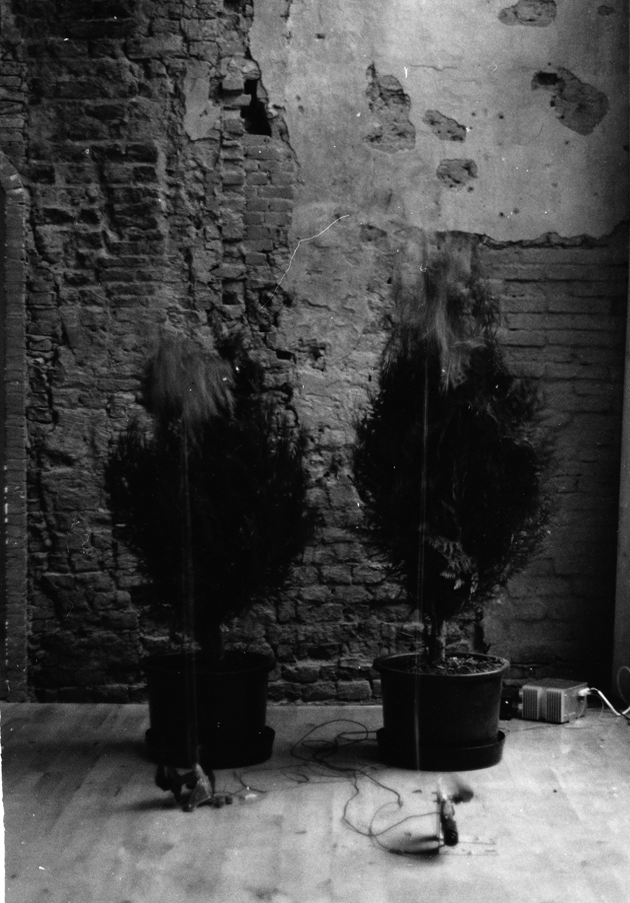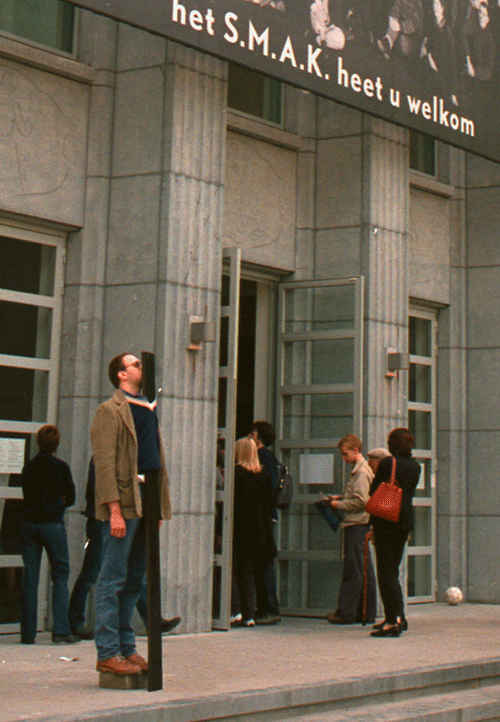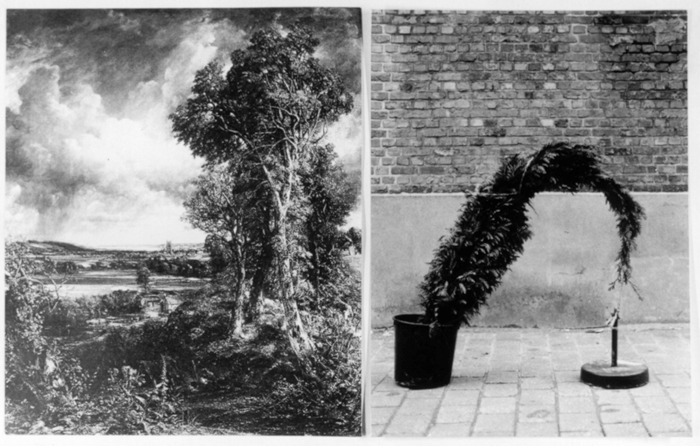
FOR ENGLISH VERSION SCROLL DOWN
De plaats der dingen
Over de onvoltooide sculptuur van Kristof Van Gestel
Volgens de Amerikaanse beeldhouwer David Smith is een sculptuur een object dat altijd in de weg staat. Waar het beeld staat kan je zelf niet meer gaan staan en vreemd genoeg hebben we altijd de neiging om nu net op die plaats te gaan staan waar het beeld staat. Hieruit besluit hij dat sculptuur zich altijd verhoudt tot het menselijk lichaam en dat deze verhouding irriteert.
Kristof Van Gestel maakt sculpturen waar we tegenaan lopen, beelden die in de weg staan. Naar eigen zeggen zet hij dingen in de wereld “die met hun schaal en materiaal mensen dwingen zich er toe te verhouden”. Daarom hebben de werken van Kristof Van Gestel een voorlopig karakter. Ze hebben hun juiste plaats nog niet gevonden. Ze zijn eerder onvoltooid dan onafgewerkt.
Voor het project Familie (2008-2009) maakte Kristof Van Gestel een reeks van achttien gelijkaardige sculpturen die elk gedurende een jaar in een gastgezin werden ondergebracht. Opvallend is dat het object overal tegen de muur werd gezet of in een hoek van een woning terechtkwam. Bij een van de families belandde het zelfs in een opslagplaats. Een behandeling die ingaat tegen elke logica van de beeldhouwkunst, die vooral gekenmerkt wordt door haar derde dimensie en de ruimte die ze rondom zich reveleert. De beelden van Kristof Van Gestel zijn voor deze families dan ook geen autonome sculpturen. Men wil graag weten hoe ze gemaakt zijn, waarvoor ze dienen, wat ze voorstellen of wat ze betekenen. Zolang deze vragen onbeantwoord blijven krijgt ‘het ding’ geen vaste plaats.
En toch gelooft Kristof Van Gestel in de utopie van de moderniteit, maar als pragmaticus weet hij dat ze niet haalbaar is. Hij stelt de maakbaarheid van de mens in vraag, maar anderzijds gelooft hij wel in de “inzetbaarheid” van zijn beelden, voor wat hij noemt, zijn “interactieve – mens tot mens – projecten”. Twee poefvormige objecten noemt hij dan weer ongecomplexeerd Twee Poefs (2008), een cd-rek krijgt als titel Object/Sculptuur (2010).
Het project met de verschillende families heeft ook aangetoond dat de ruimte het moeilijk heeft om het beeld te ontvangen, maar ook dat het beeld het moeilijk heeft om zijn ruimte te vinden. Een problematiek die zo oud is als de beeldhouwkunst zelf, maar die hier in de permanente spanning tussen tekst en context, een hedendaagse invulling krijgt.
Een mooi voorbeeld hiervan is zijn Zetobject (2006), een opvallend kunstwerk dat Kristof Van Gestel introduceerde in de praktijkruimte van een gesprekstherapeute en dat door zijn enigmatische vorm en zijn fel oranje kleur, algauw zelf het gespreksonderwerp werd. In de geest van de esthétique relationnelle functioneert zijn werk hier als intermediair of als aanleiding tot een directe vorm van menselijke communicatie. Het is dus eerder pre-tekst (wat aan de tekst voorafgaat) dan context, een formeel gezien haast letterlijke ‘kapstok’, waar een verhaal kan worden aan opgehangen.
De objecten van Kristof Van Gestel hebben duidelijk antropomorfe kenmerken. De organische vormen van zijn Familie lijken op knielende of in elkaar gerolde lichamen. Zijn ‘kapstok’ is net even groot als de kunstenaar zelf. In de streng verticale vorm herkennen we een echo van de eindeloze wervelkolom van Brancusi of van de kwetsbare maar trots rechtopstaande personages van Giacometti. Maar ook van de totemische sculpturen van Barnett Newman uit de jaren zestig, die hij consequent betittelde als Here. De geïsoleerde verticale staat volgens Harold Rosenberg voor “the self and for the first, for the conferring of meaning and the origin of substance …”.
Op het eerste gezicht lijkt de evolutie van dit sculpturale oeuvre op een pendelbeweging tussen de verschillende kwaliteiten van de tekst en van de context. Ze worden vertaald in termen van kunst en werkelijkheid, object en subject, productie en perceptie, privaat en publiek, materie en betekenis, esthetisch en functioneel, letterlijk en figuurlijk, … Bij nader toezien is de kunstenaar op zoek naar een allesomvattend systeem, interdisciplinair en intertekstueel, waarbij tekst en context samenvallen of tenminste als complementaire elementen, mekaar prefect kunnen aanvullen.
Het werk van Kristof Van Gestel is ontstaan uit de performance, waarbij het subjectieve lichaam van de kunstenaar centraal stond. Om de mening van de toeschouwer werd niet gevraagd. Langzaam maar zeker evolueerde hij naar het object, waarbij vorm en kleur, massa en volume, afmetingen en verhoudingen, licht en ruimte, zijn belangrijkste parameters werden. Gelijktijdig nam hij ook afstand van zijn creaties en liet hij ze over aan toevallige passanten. Door de plaats van zijn objecten te bepalen, bepaalden ze ook de plaats van de kunstenaar. De bestemming van het werk was niet meer de intentie van de kunstenaar maar deze van de bestemmeling.
Op zoek naar de plaats van zijn sculpturen in de (kunst)wereld neemt de kunstenaar in fotowerken het heft opnieuw in eigen hand. Zowel de efemere handeling van de performance als de onvoltooide bestemming van het object vinden er een vaste plaats. Hun artistieke bestemming wordt bestendigd in een momentopname die dank zij het medium fotografie een permanente vorm krijgt.
Lieven Van Den Abeele, 2011
ENGLISH VERSION
The place for things
On the incomplete sculpture of Kristof Van Gestel
According to the American sculptor David Smith, a sculpture is an object that is always in the way. You can yourself no longer stand where the sculpture stands, and oddly enough we always want to stand precisely where the sculpture stands. From this he concludes that sculpture always relates to the human body and that this relationship is irritating. Kristof Van Gestel makes sculptures that we bump into, which stand in our way. As he himself says, he places things in the world ‘which by their scale and material force people to relate to them’. Which is why his work appears temporary. They have not yet found the right place. They are incomplete rather than unfinished.
For the Family project (2007-2010), Van Gestel made a series of nineteen similar sculptures each of which spent a year with a host family. It is striking that in every case the object was put against a wall or in a corner. In one case it even ended up in a storeroom. This treatment goes against all sculptural logic, which is characterised primarily by its third dimension and the space it reveals around it. But to these families Van Gestel’s works were not autonomous sculptures. People like to know how they were made, what they are for, what they represent or what they mean. As long as these questions remain unanswered, ‘the thing’ is not given a fixed location.
And yet Van Gestel believes in the utopia of modernity, though as a pragmatist he knows that it is not achievable. He questions the possibility of moulding mankind, but on the other hand he does believe in the ‘usefulness’ of his sculptures in what he calls his ‘interactive – human to human – projects’. Without a shadow of a complex, he simply calls two pouffe-like objects Two Pouffes (2008) and a CD rack is given the title Object/Sculpture (2010). The project with the various families also demonstrated that the space has difficulties receiving the sculpture, but also that it is hard for the sculpture to find its place. A problem that is as old as sculpture itself, but which here takes a contemporary turn in the permanent tension between text and context.
A fine example of this is his Zetobject (2006), a striking work of art that Van Gestel introduced into a conversational therapist’s consulting room and which, because of its enigmatic form and vivid orange colour, itself soon became the subject of conversation. In the spirit of the esthétique relationelle, his work here functions as an intermediary or as the occasion for a direct form of human communication. So it is more pre-text (that which precedes the text) than context, in terms of form an almost literal ‘coat-rack’ on which a story can be hung.
Kristof Van Gestel’s objects have clearly anthropomorphic features. The organic forms of his Family look like bodies kneeling or rolled into one another. His ‘coat-rack’ is as big as the artist himself. In its strictly vertical form we recognise an echo of Brancusi’s endless spinal column or of the proud but fragile upright figures by Giacometti. But also of Barnett Newman’s totemic sculptures from the sixties, to which he consistently gave the title Here. According to Harold Rosenberg, the isolated vertical stands ‘for the self and for the first, for the conferring of meaning and the origin of substance…’
At first sight the evolution of this sculptural oeuvre looks like a pendulum movement between the different qualities of text and context. They are translated into terms of art and reality, object and subject, production and perception, private and public, matter and meaning, aesthetic and functional, literal and figurative. On closer examination, the artist is looking for an all-embracing system, interdisciplinary and intertextual, where text and context coincide or are at least able to be perfect mutually complementary elements.
Kristof Van Gestel’s work arose out of performance, in which the subjective body of the artist occupied a central position. The spectator’s opinion was not asked for. He slowly but surely evolved towards the object, with form and colour, mass and volume, dimensions and proportions and light and space as his most important parameters. At the same time he also distanced himself from his creations and left their fate to chance passers-by. When he defines the position of his objects, they too define the place of the artist. The destiny of the work was no longer the intention of the artist, but of the person for whom it was intended.
While looking for the position of his sculptures in the art world, the artist once again took hold of the reins in a series of photographic works. It gives a permanent place to both the ephemeral action of the performance and the incomplete destiny of the object. Their artistic destiny is perpetuated in a snapshot which, thanks to the medium of photography, assumes a permanent form.
Lieven Van De Abeele, 2011


